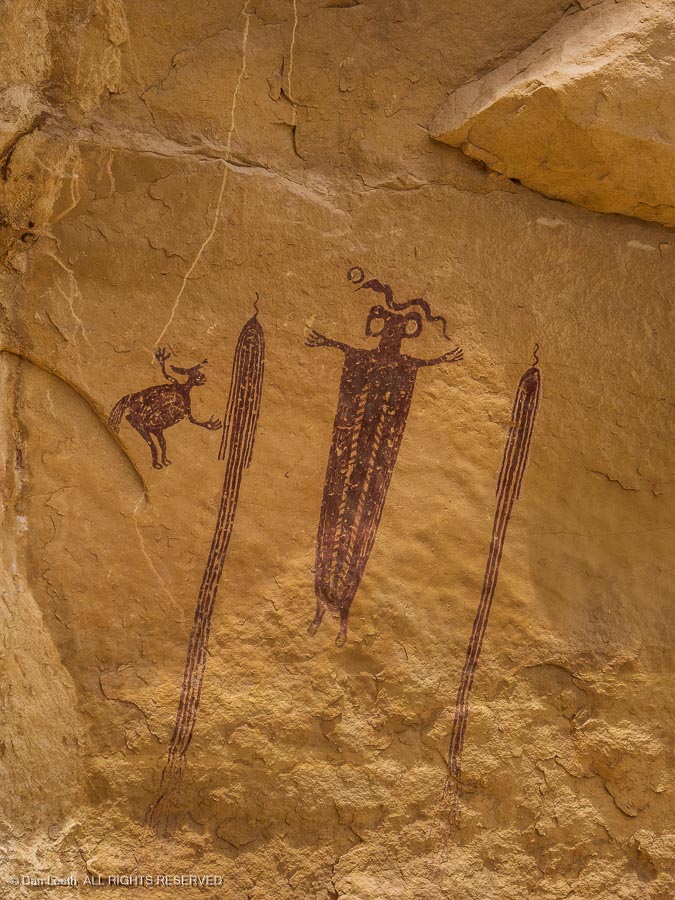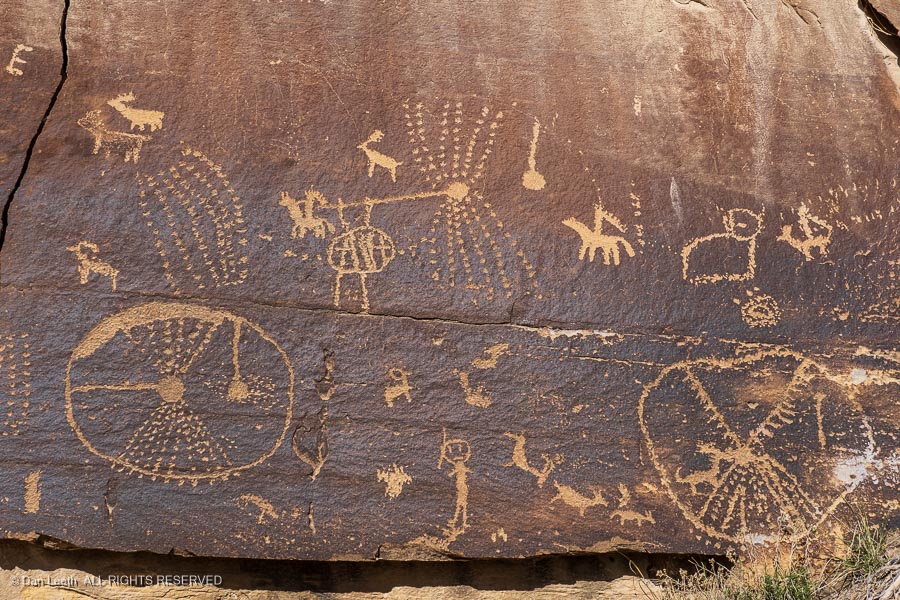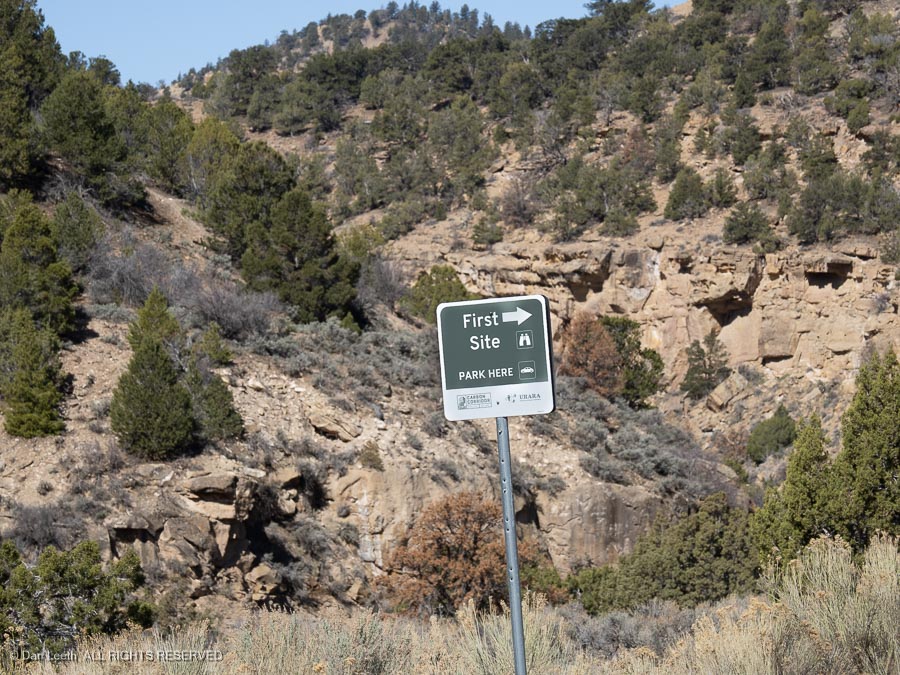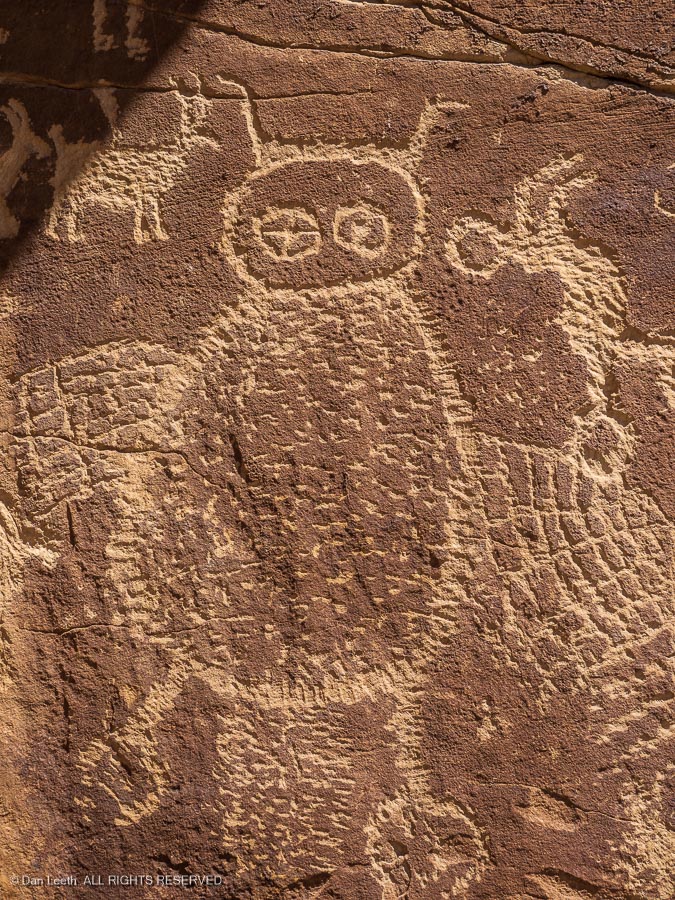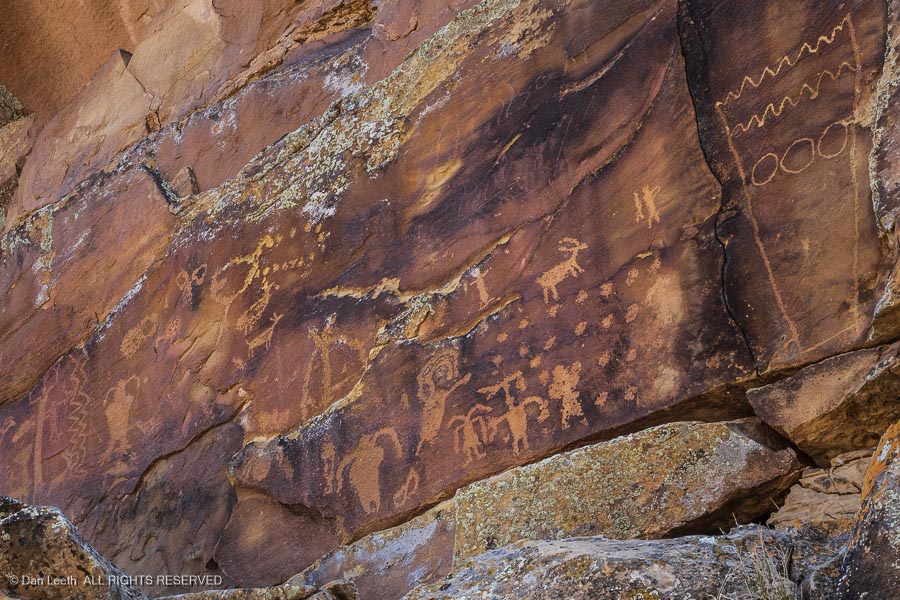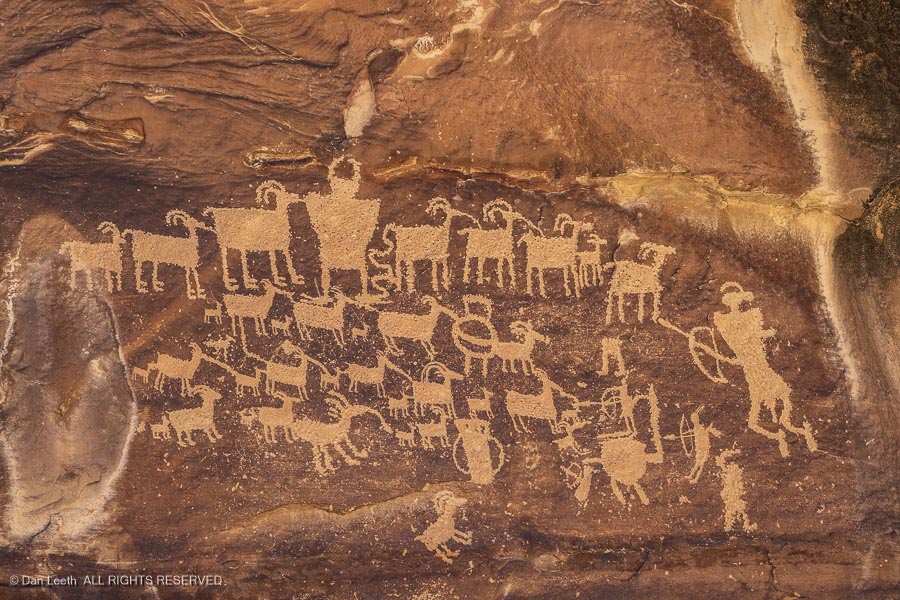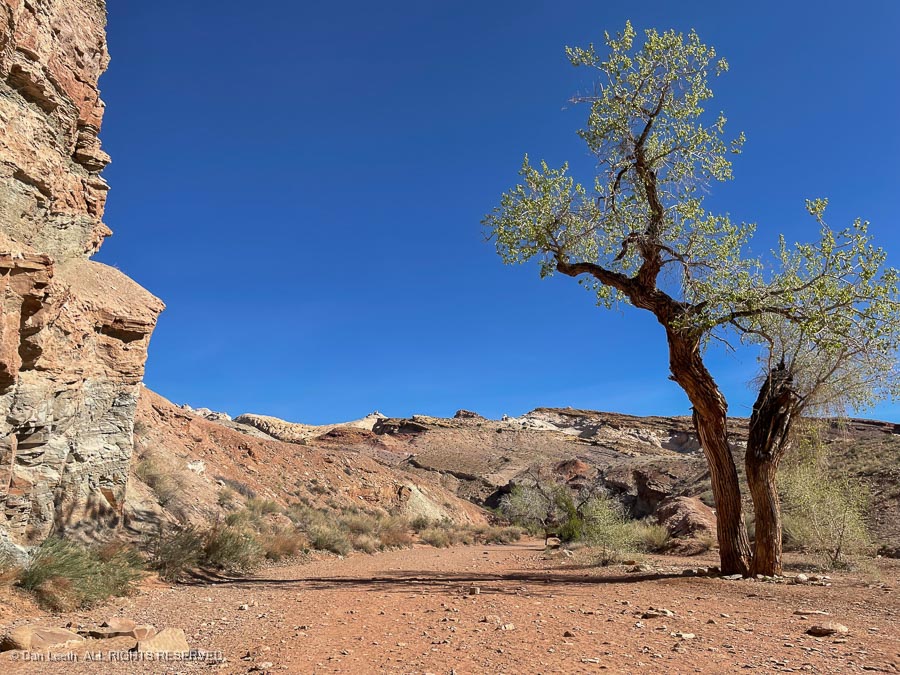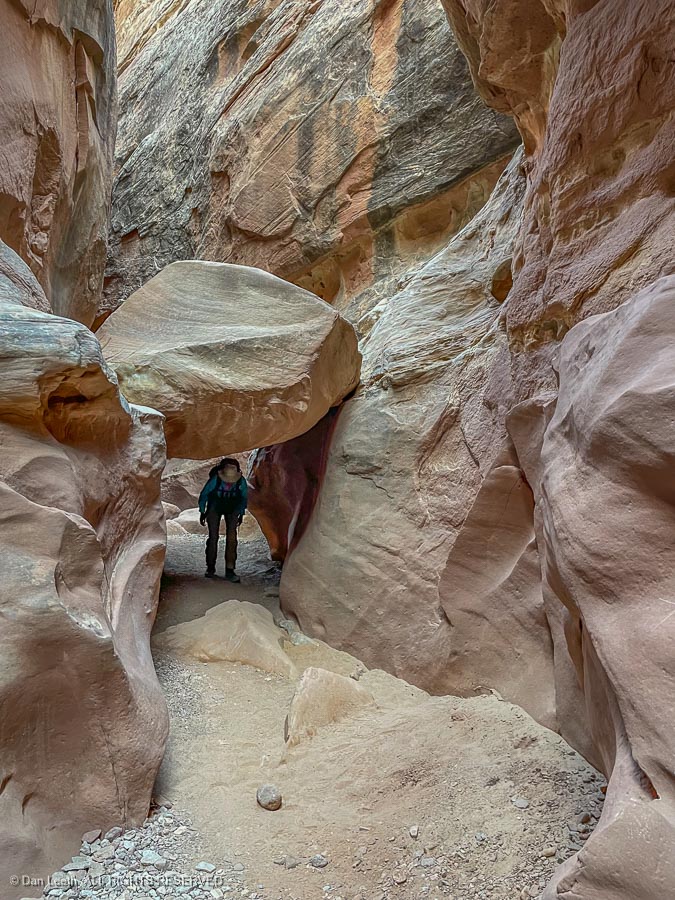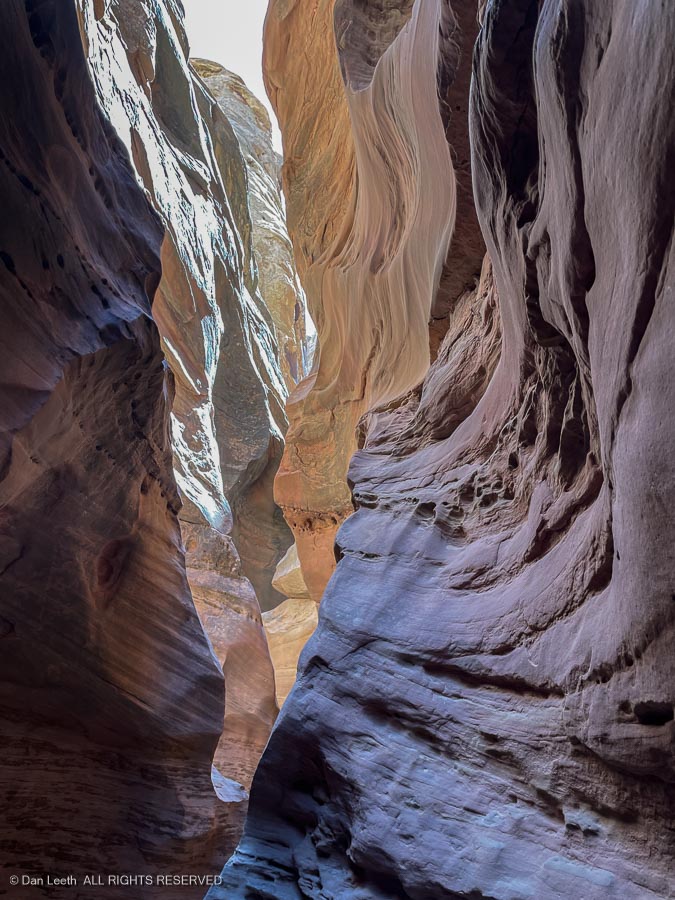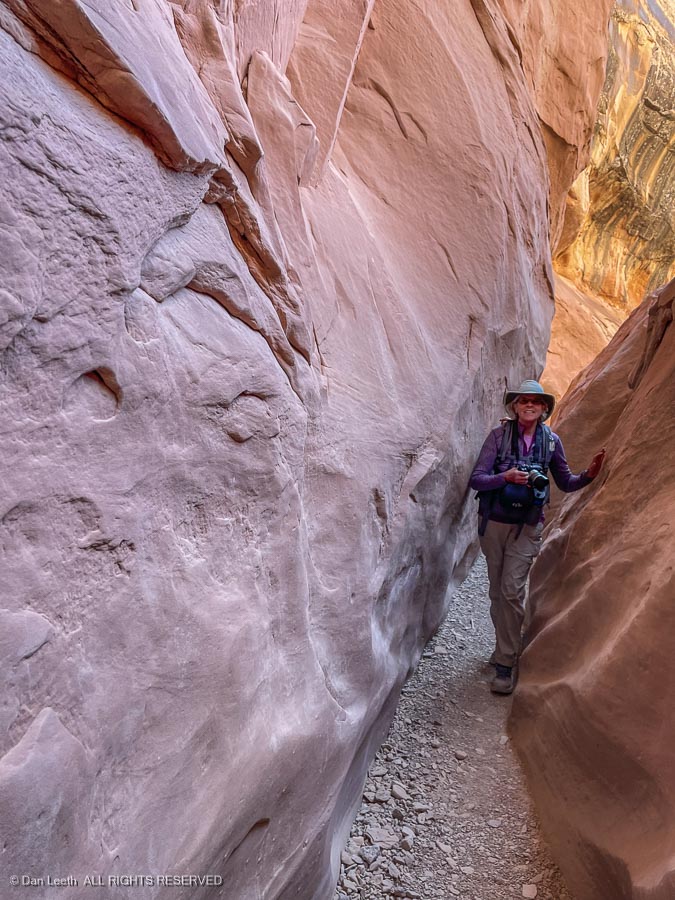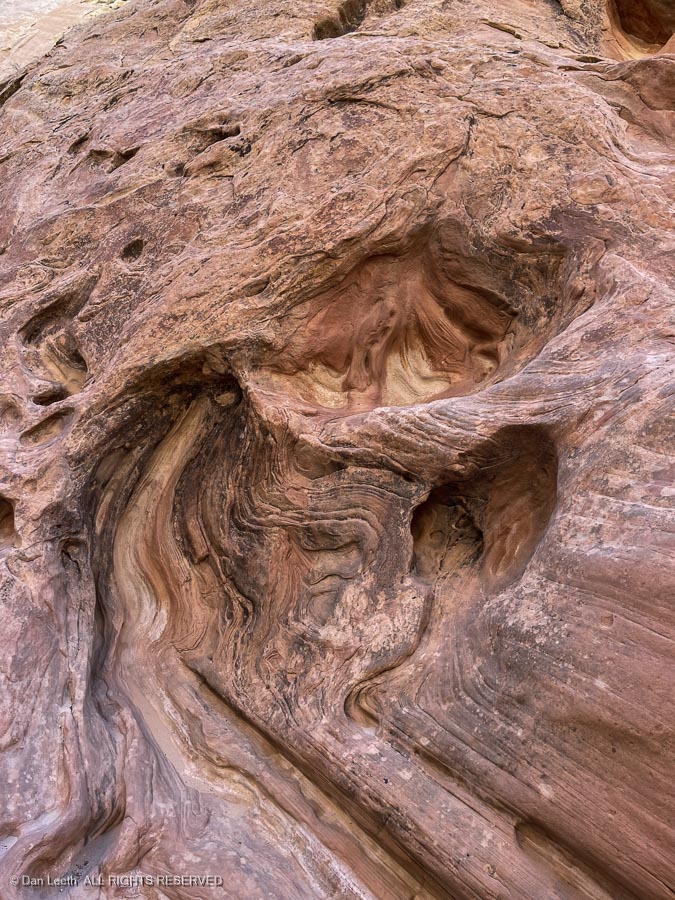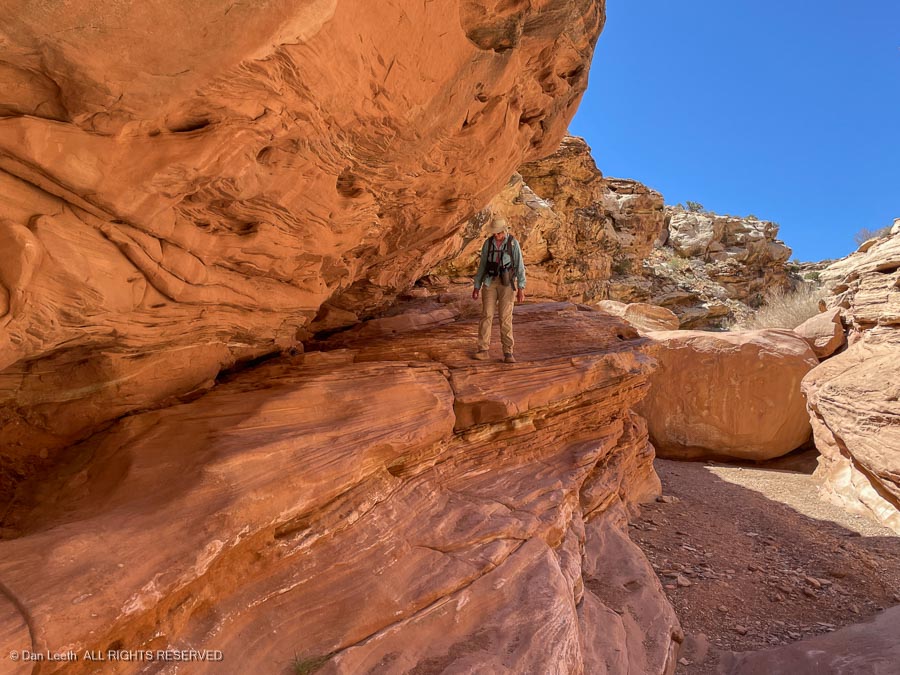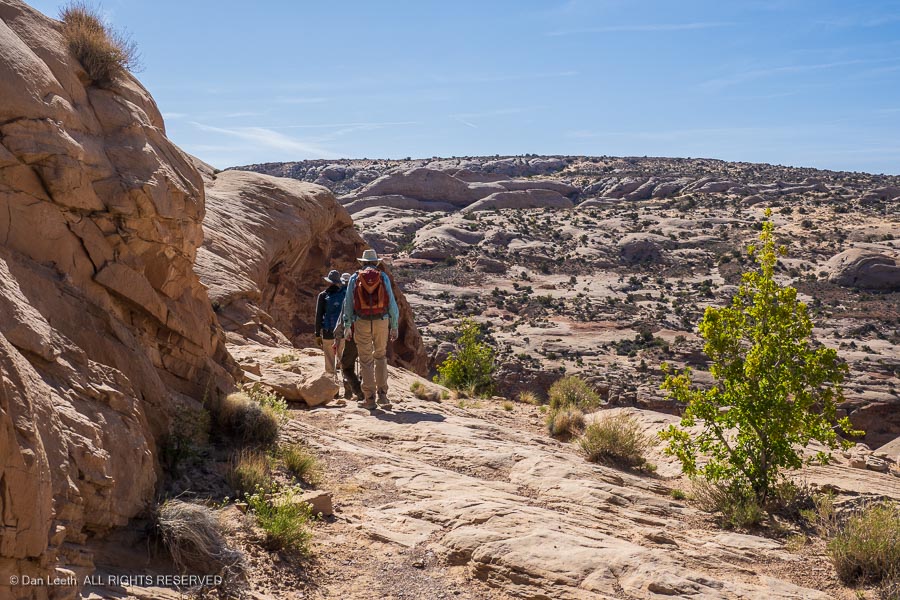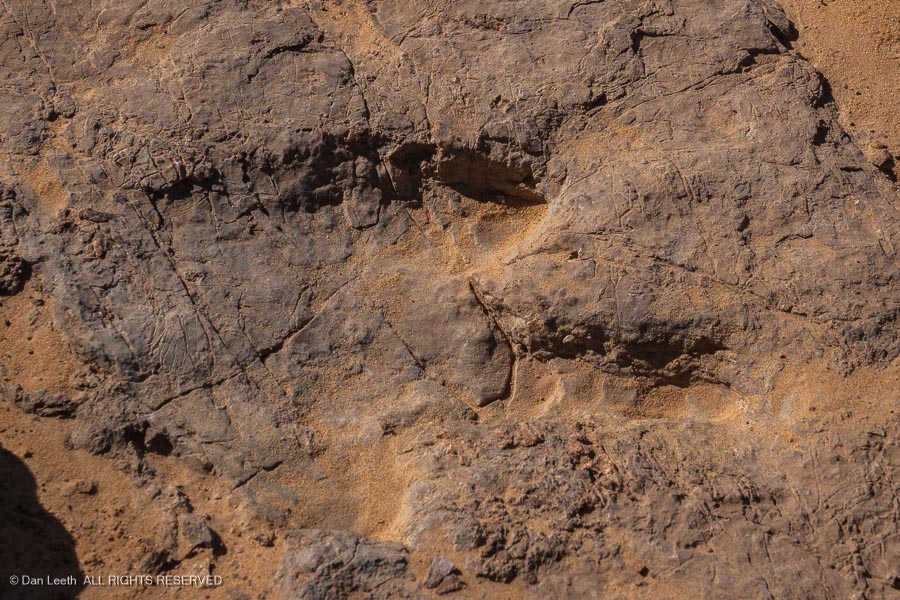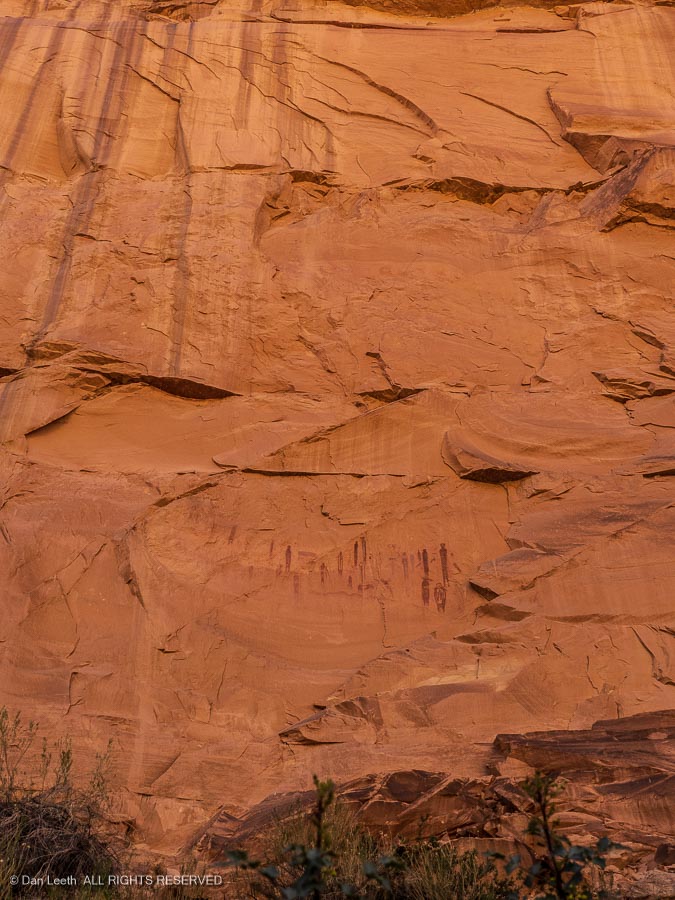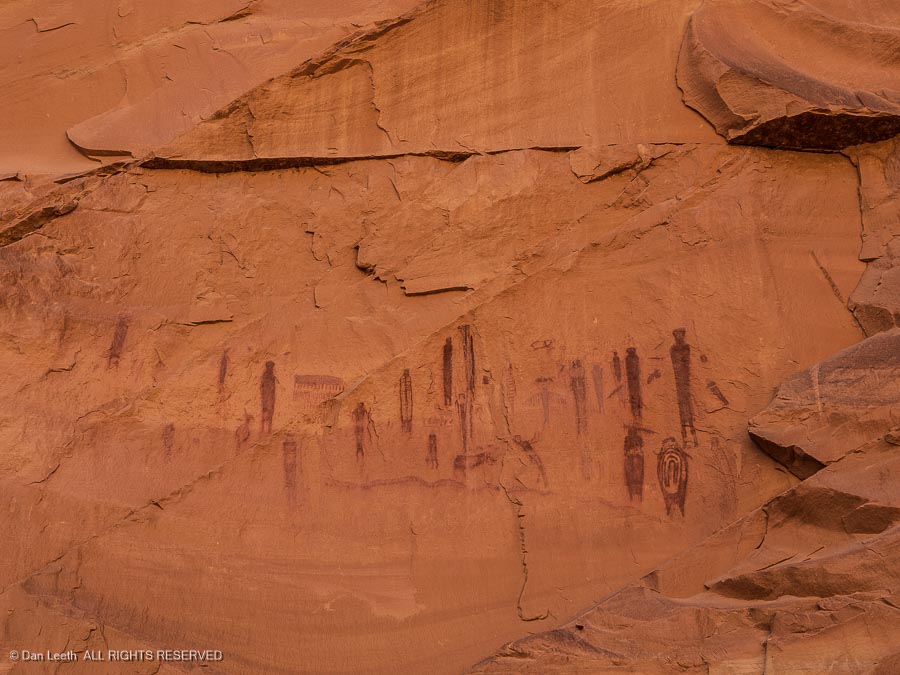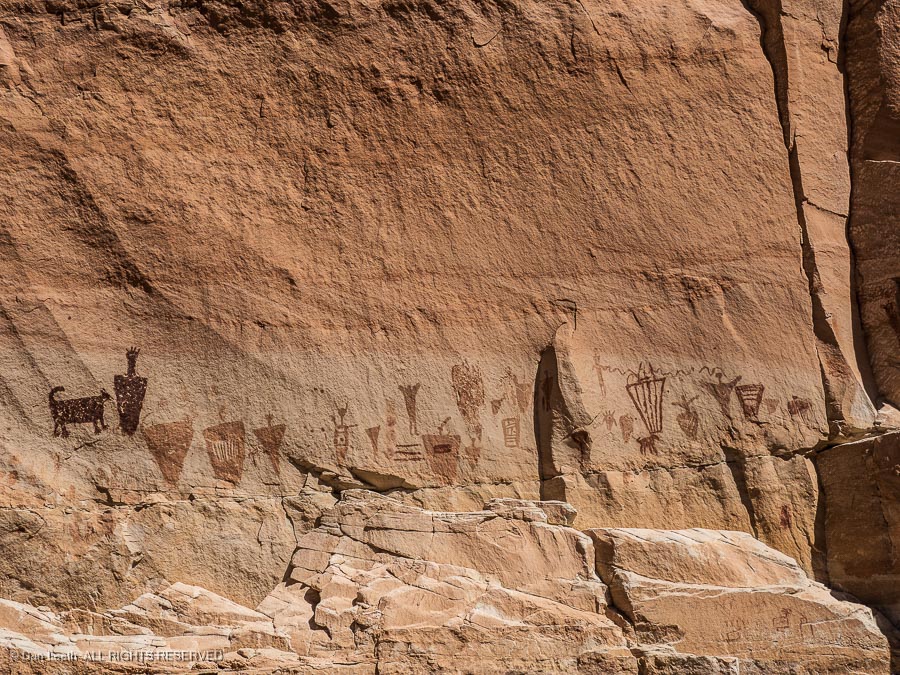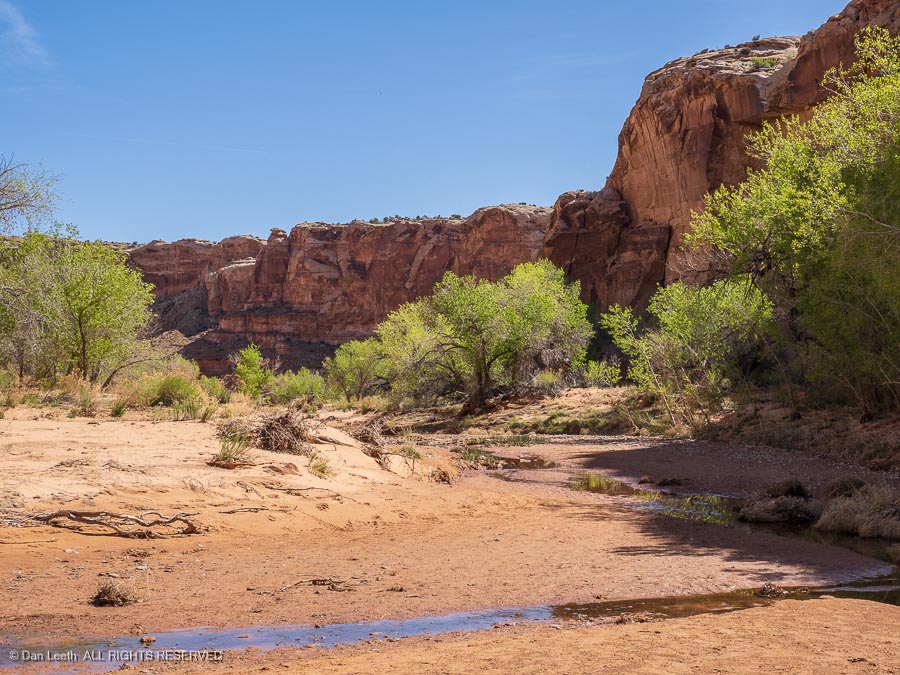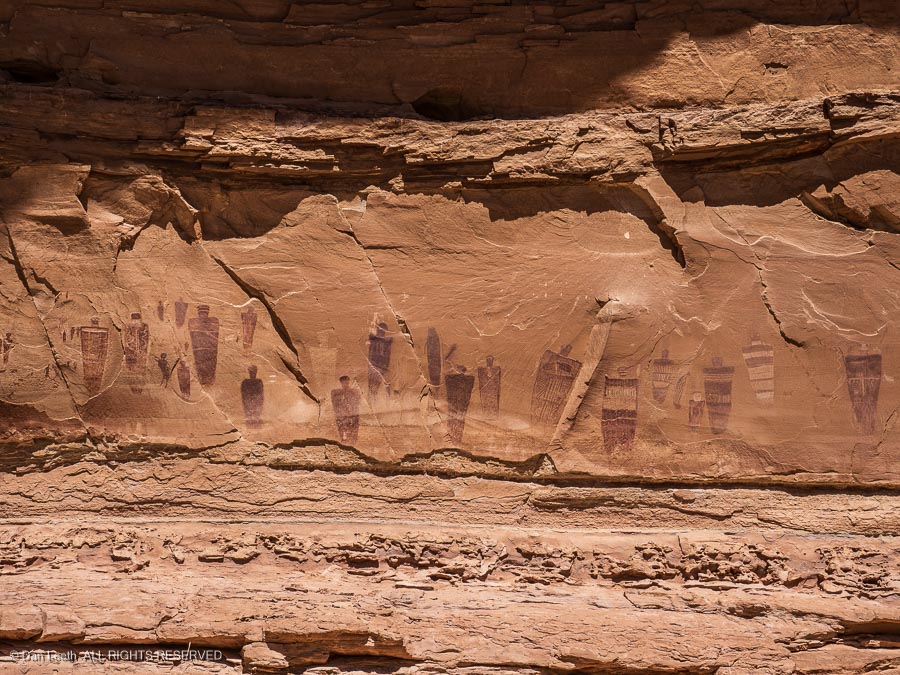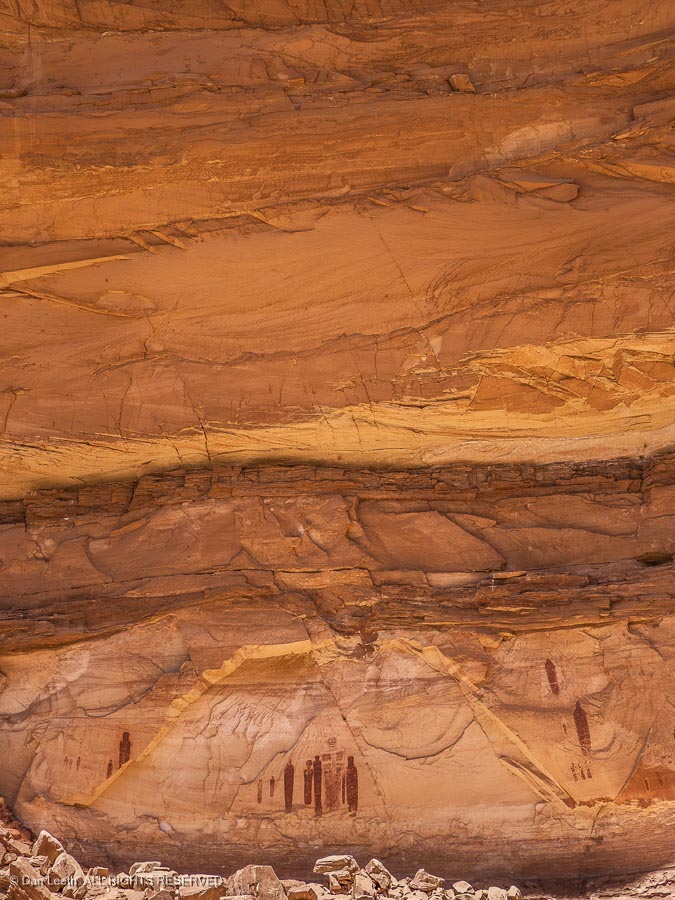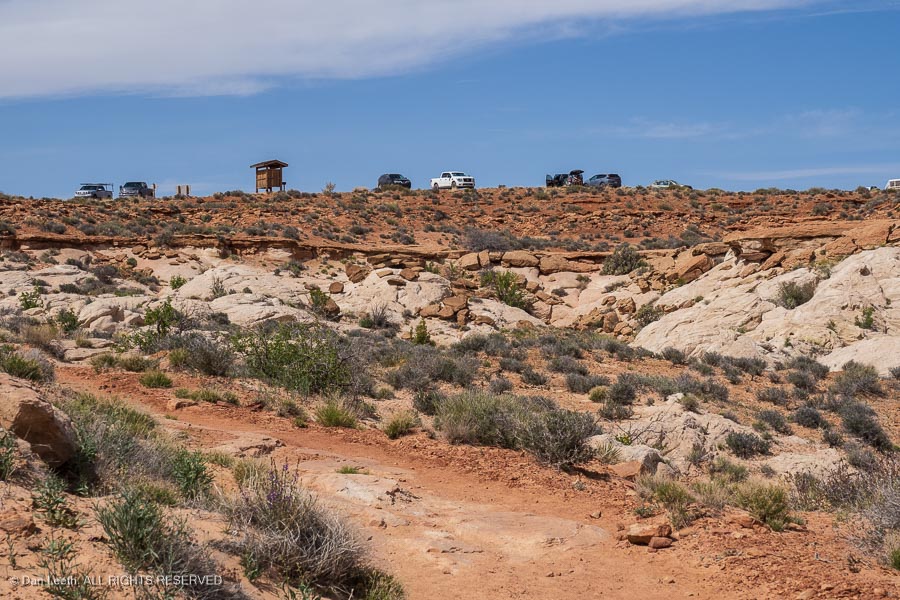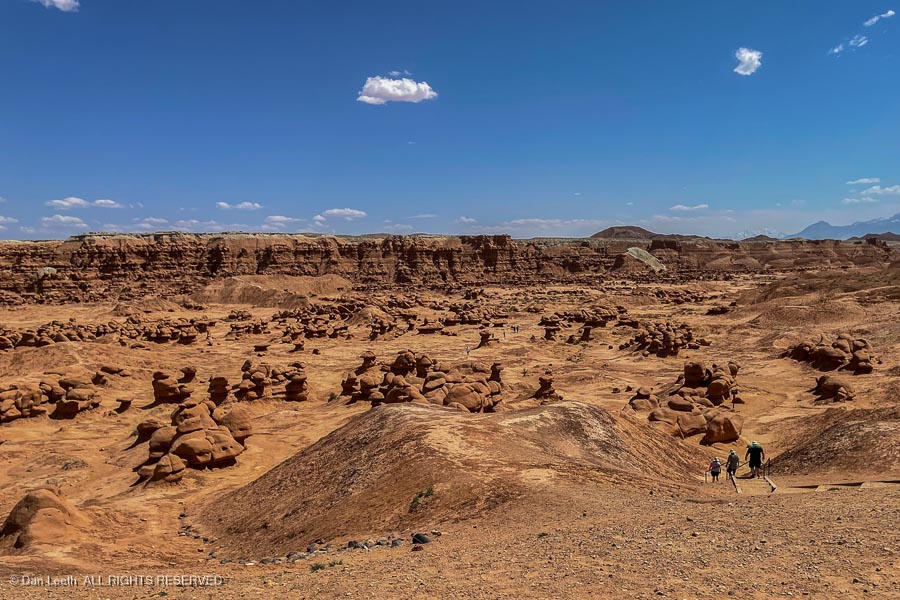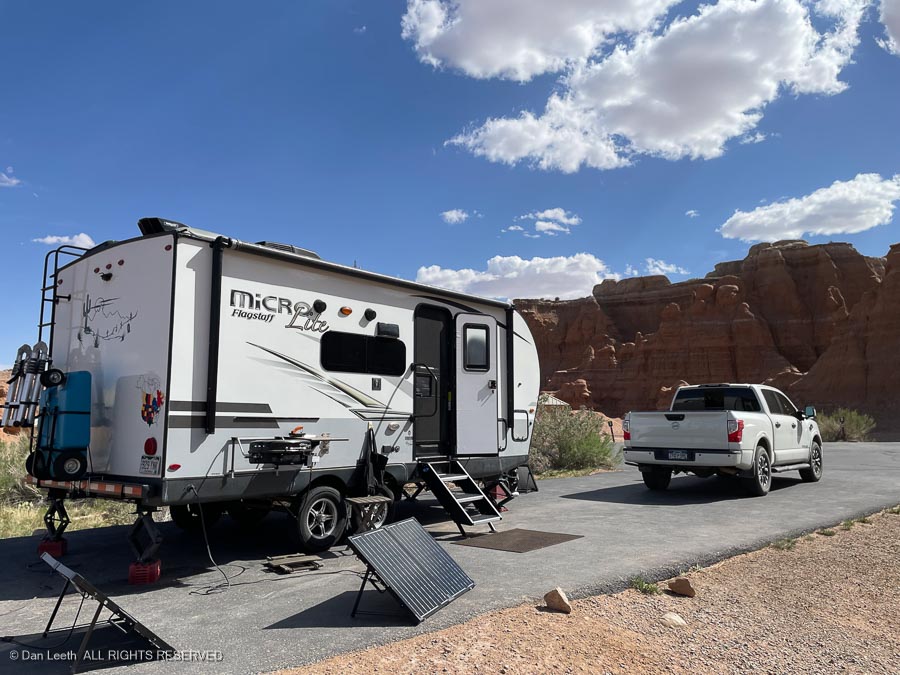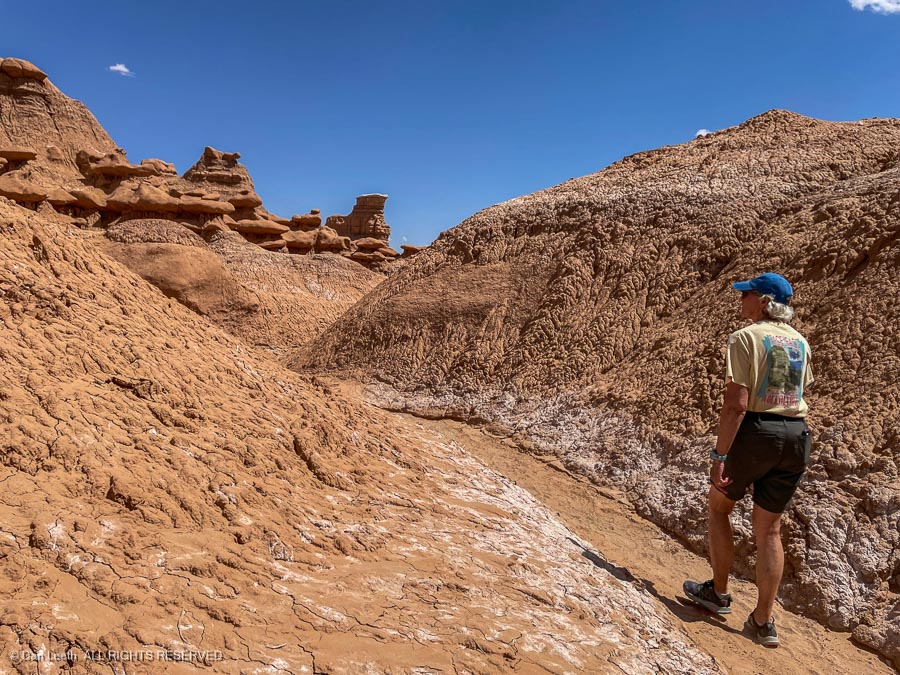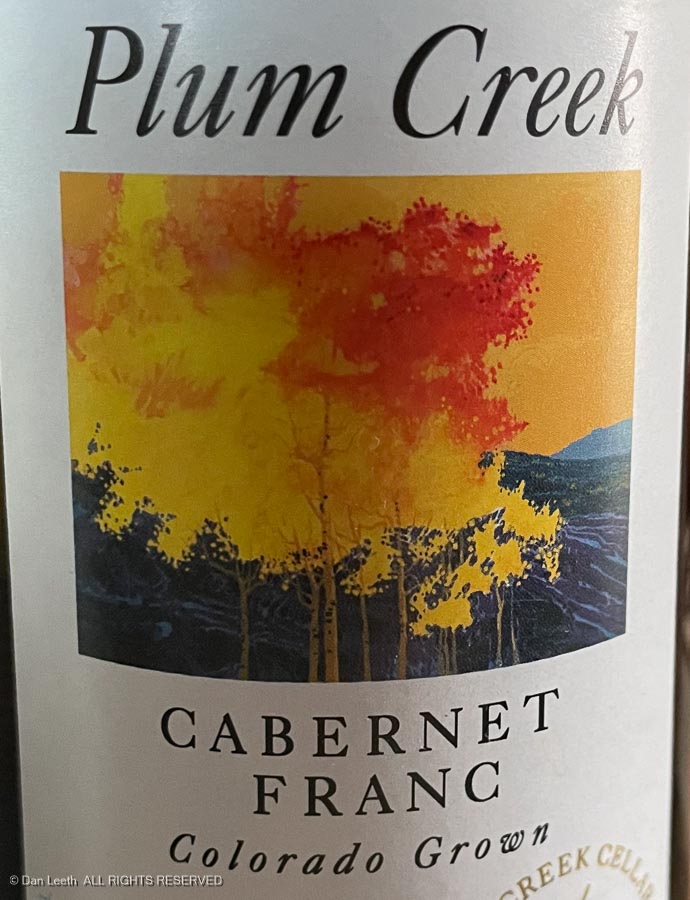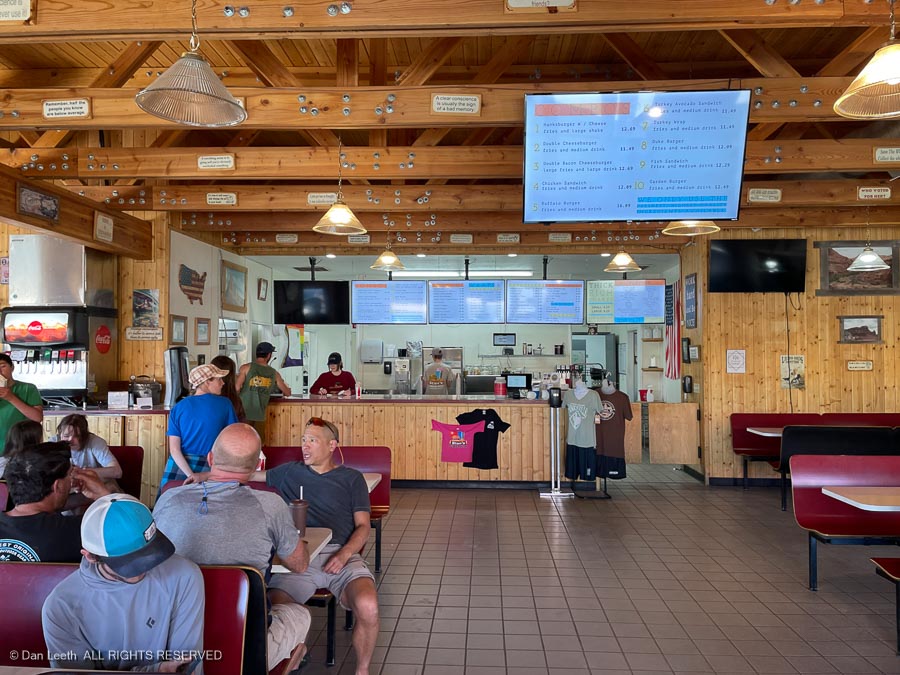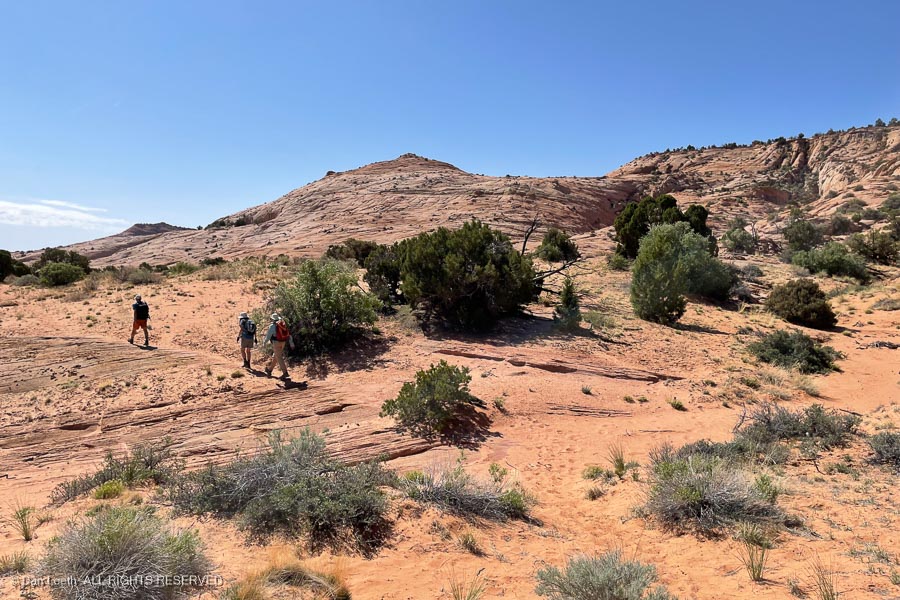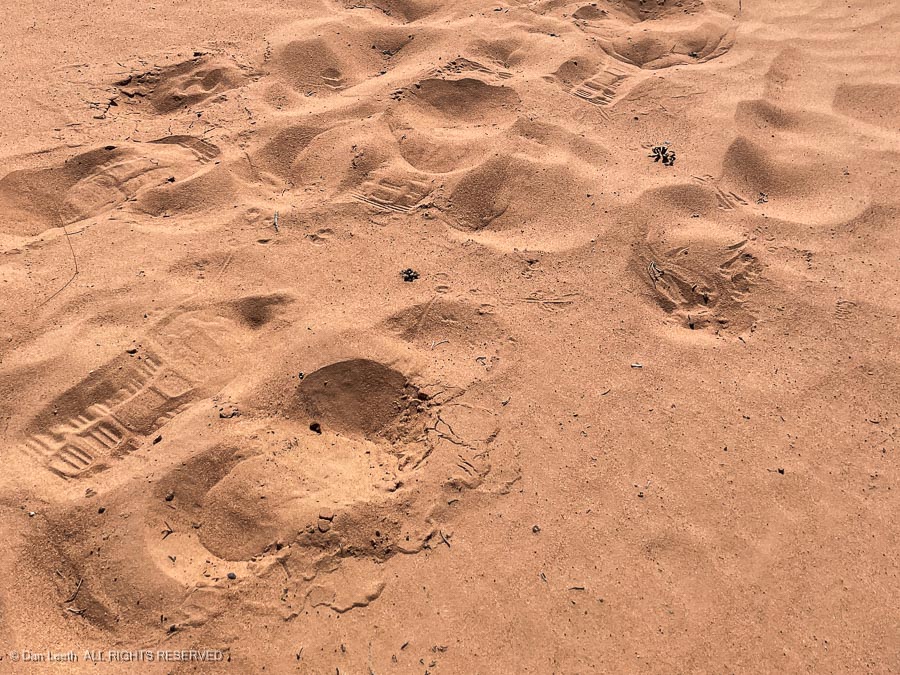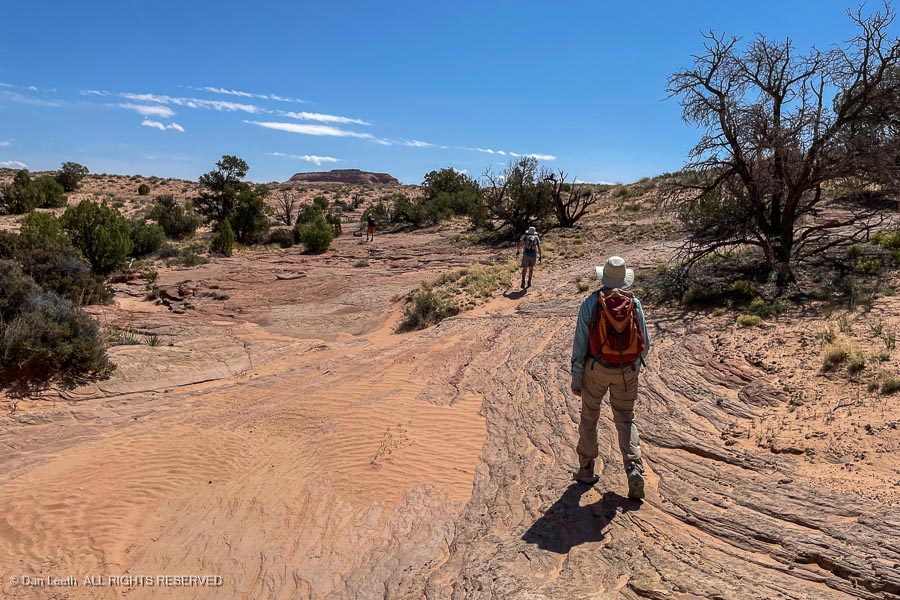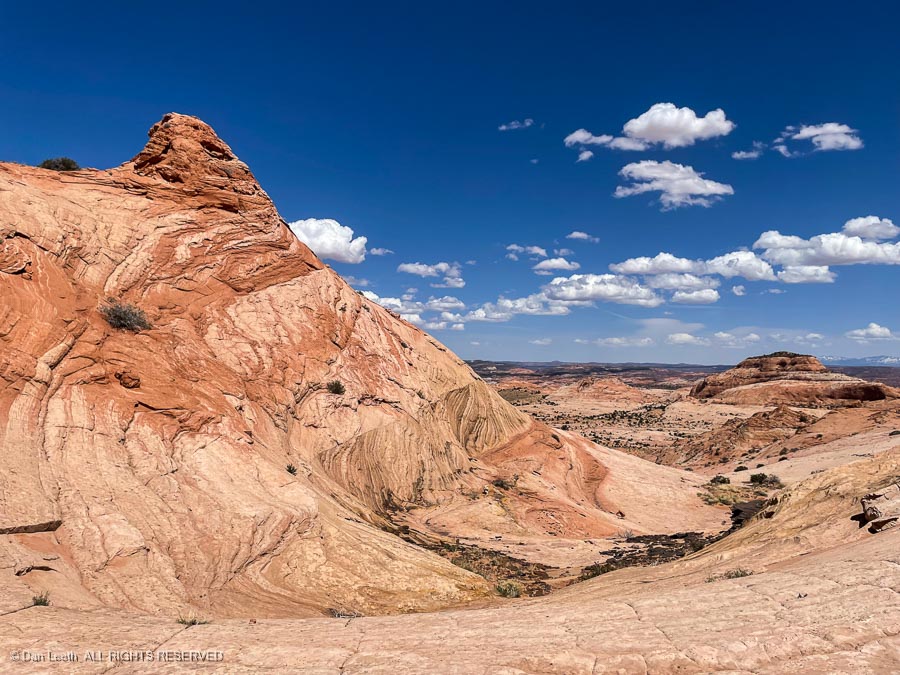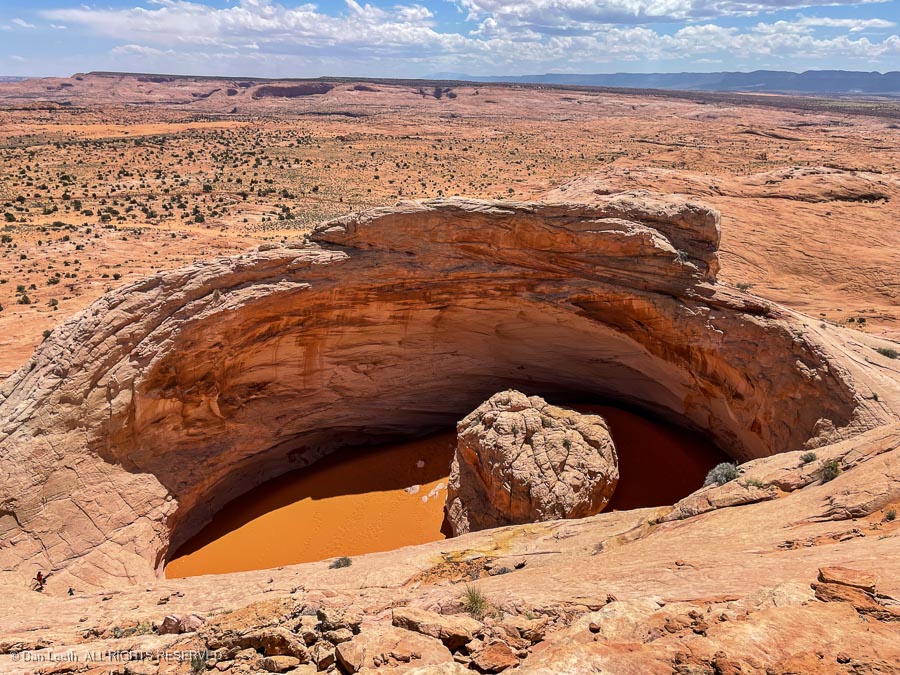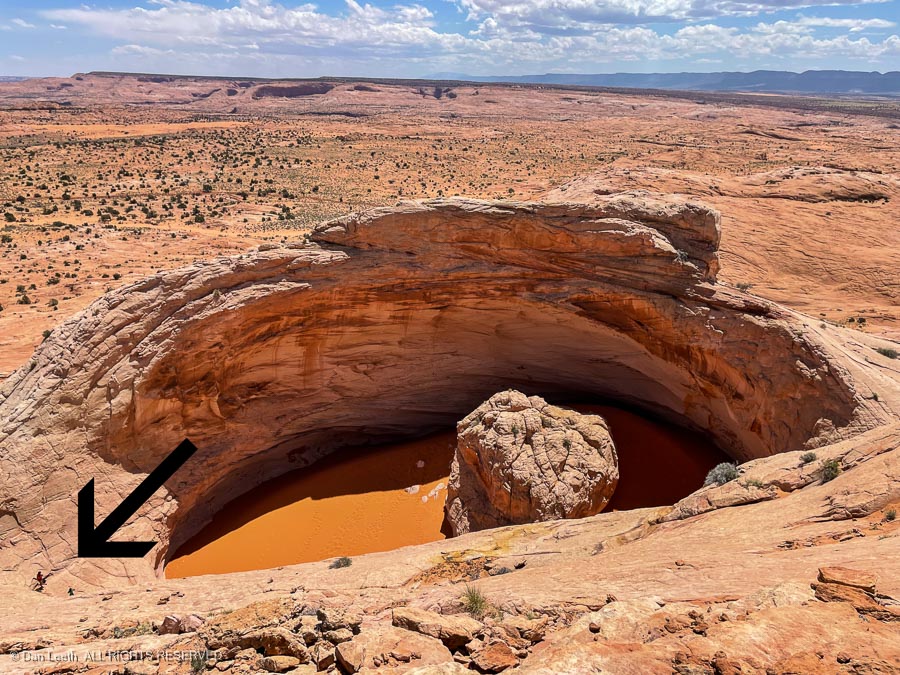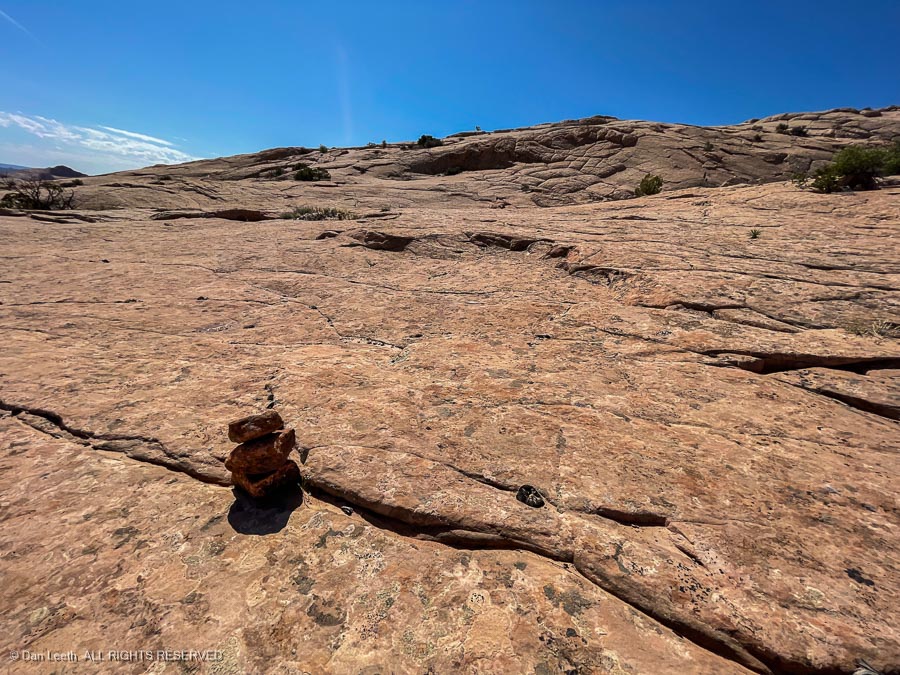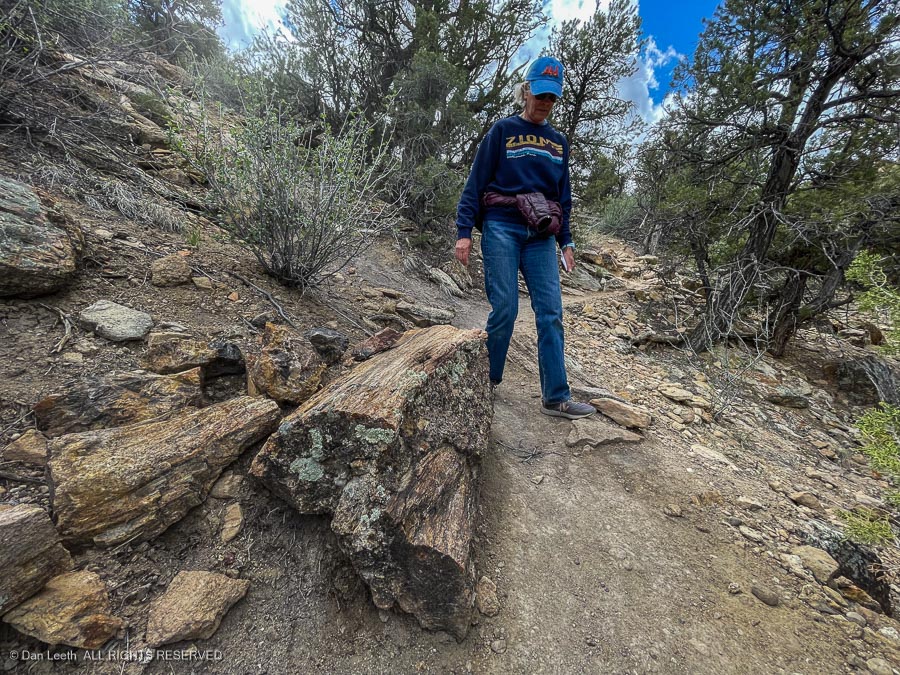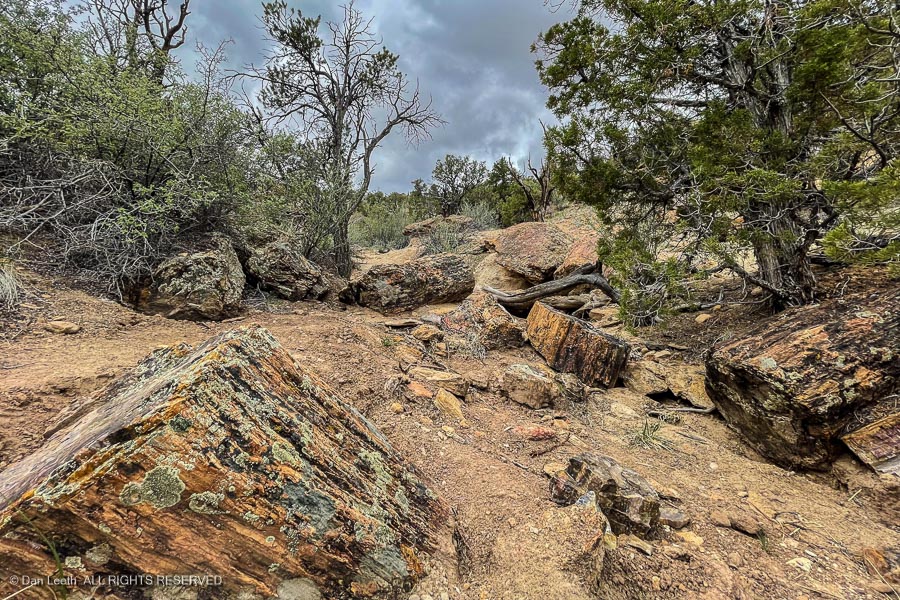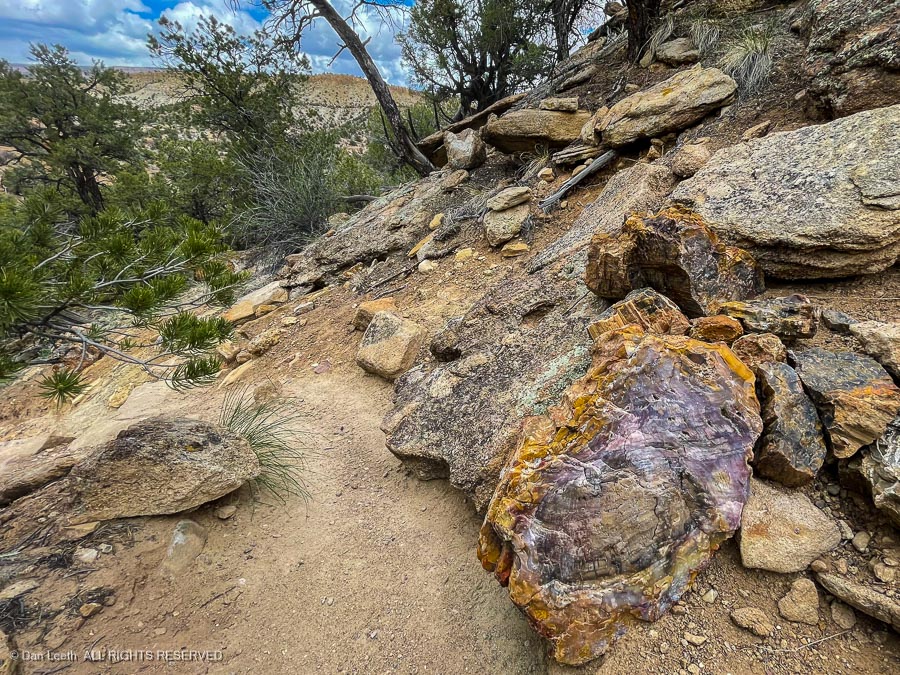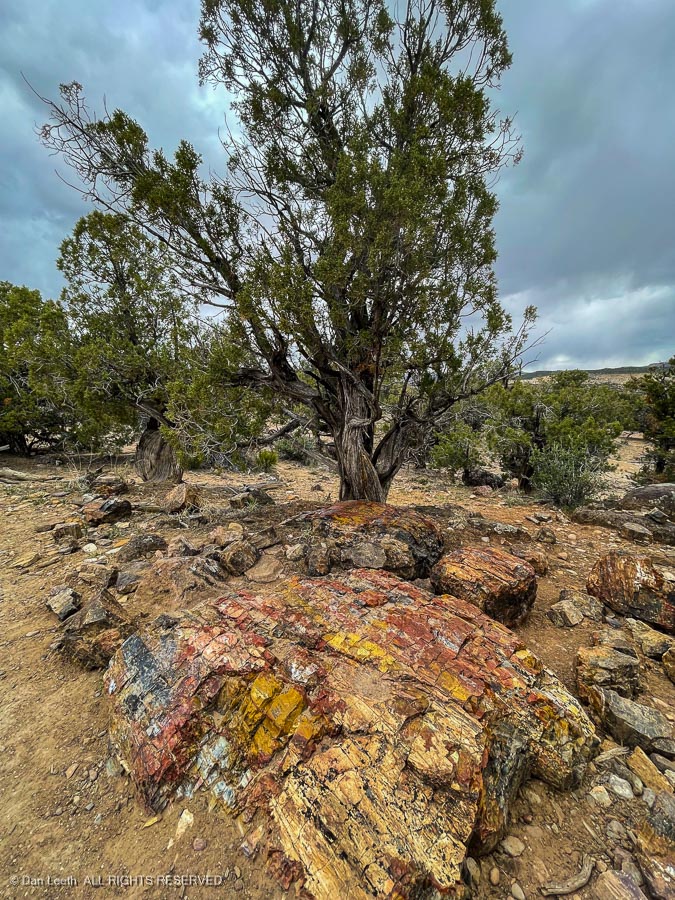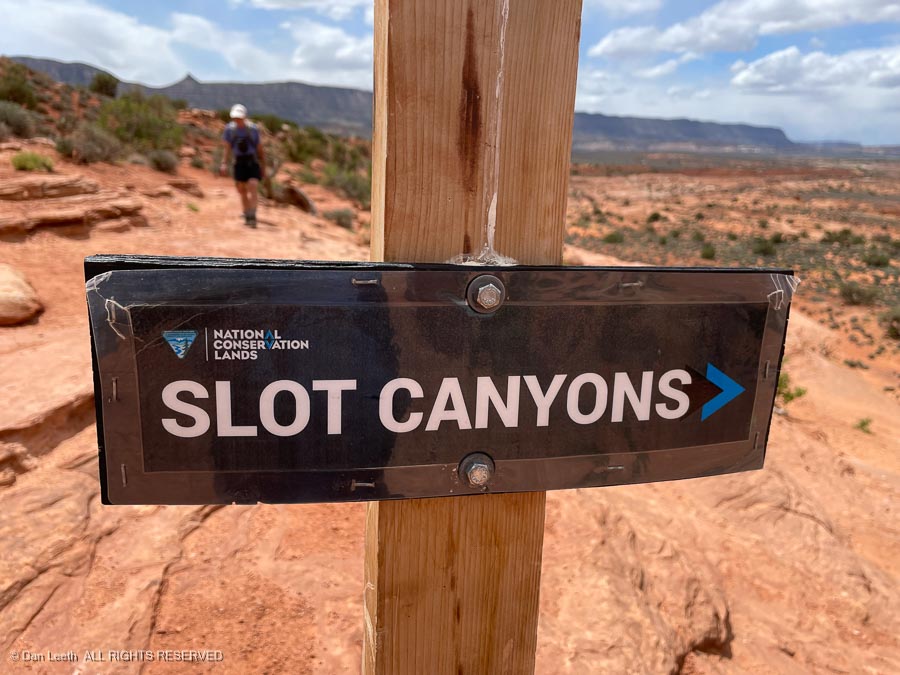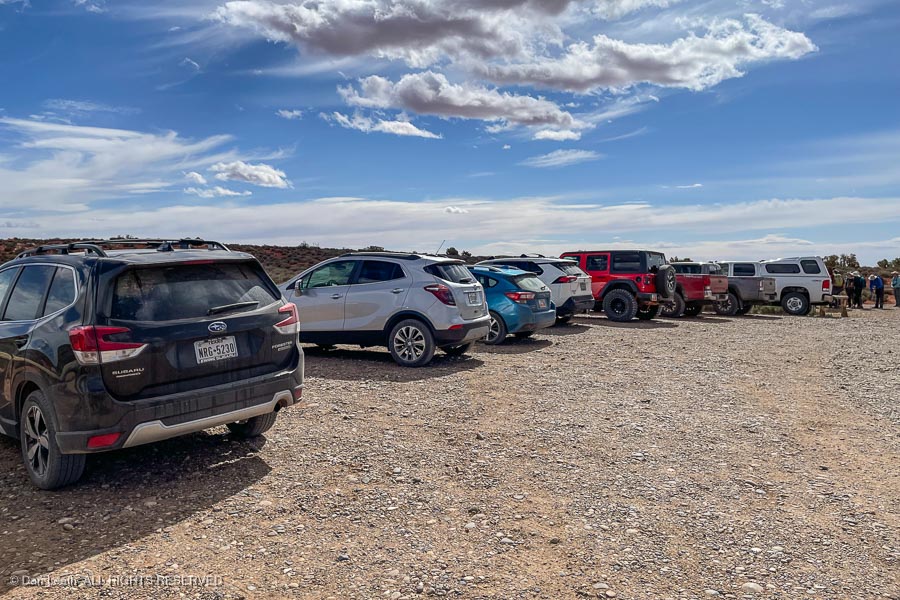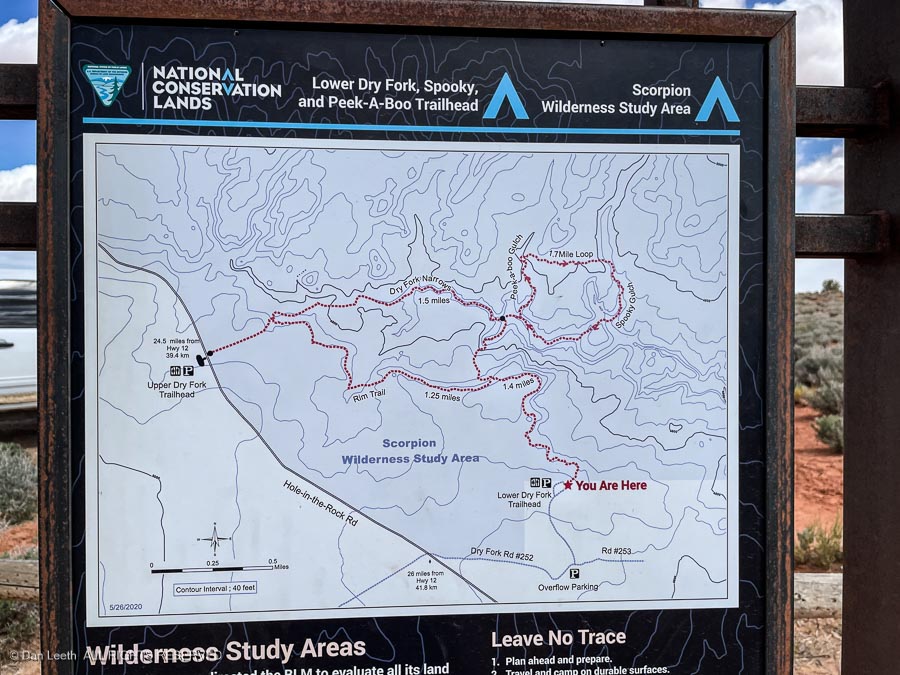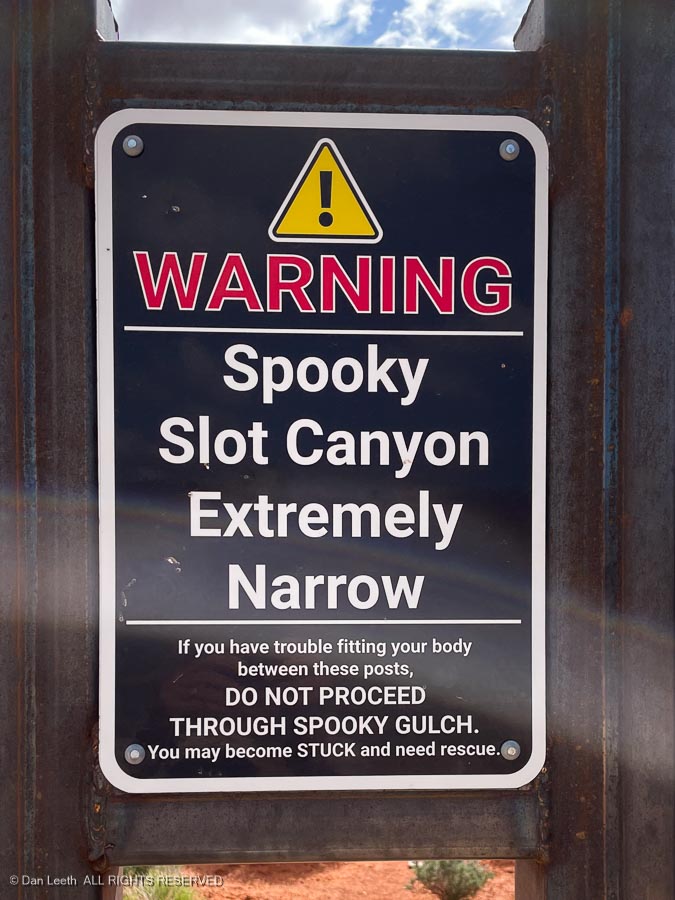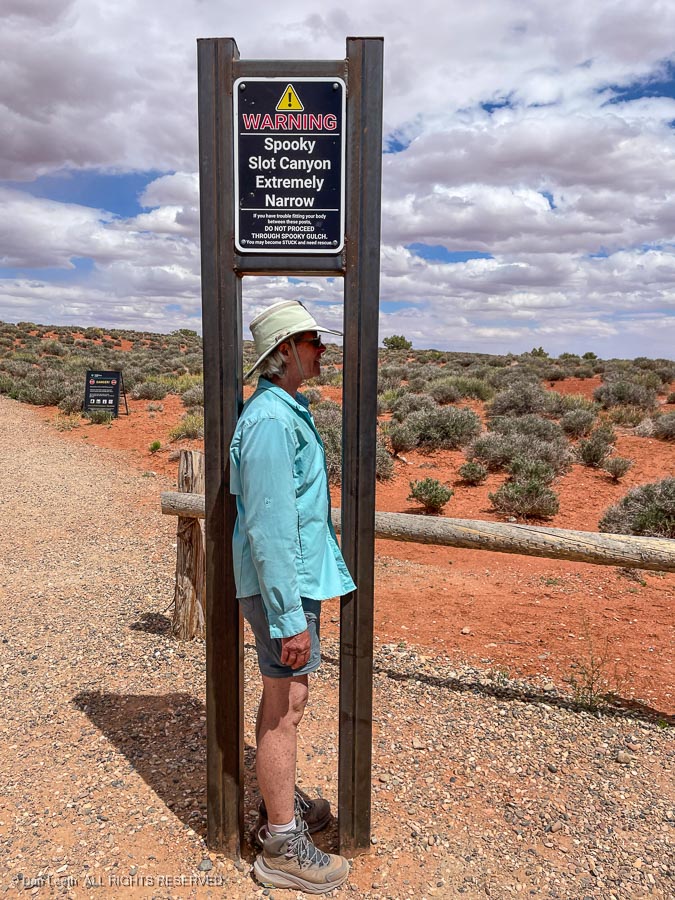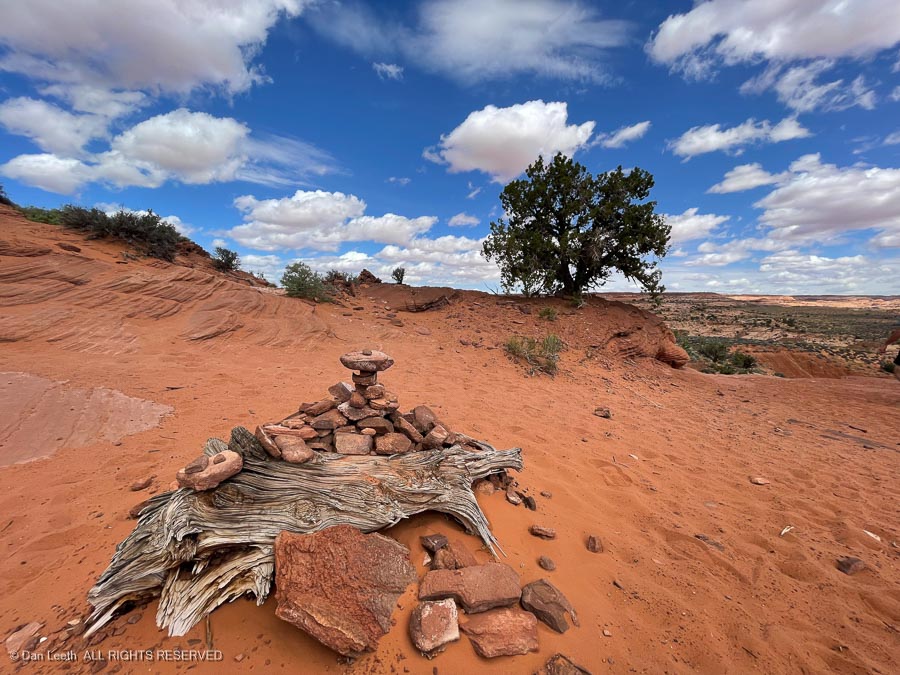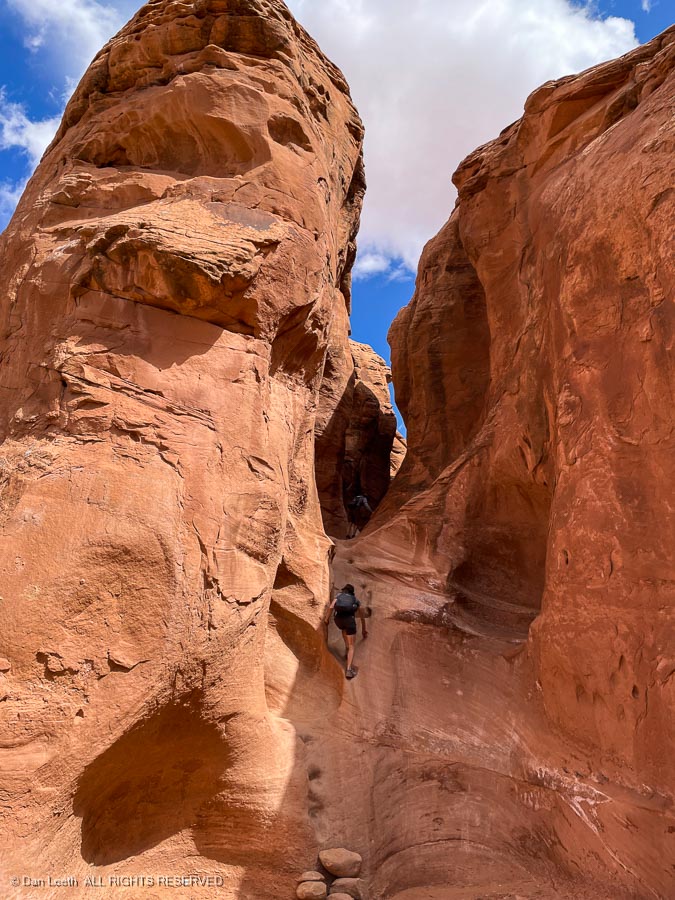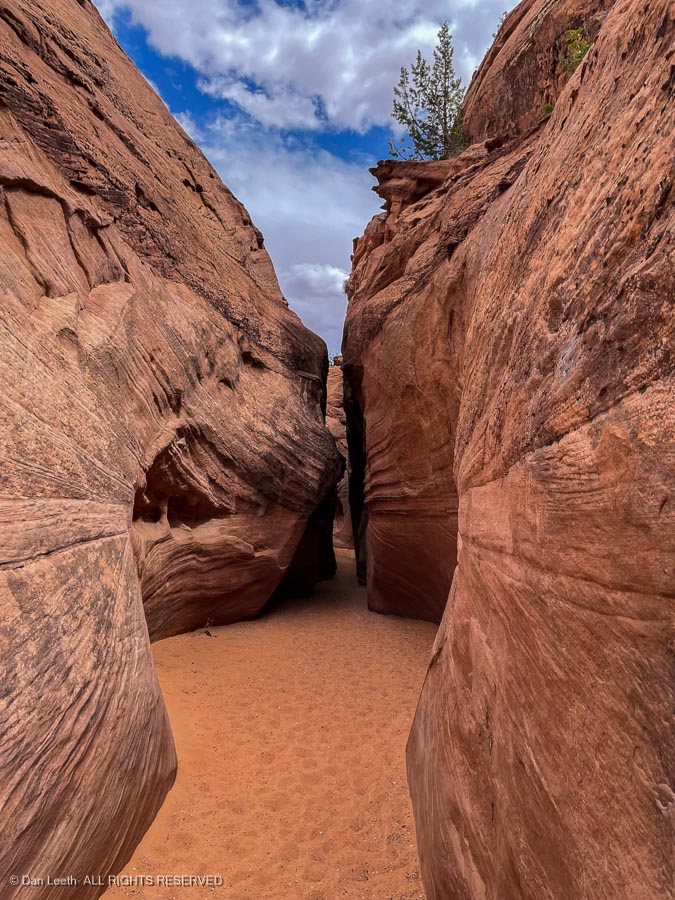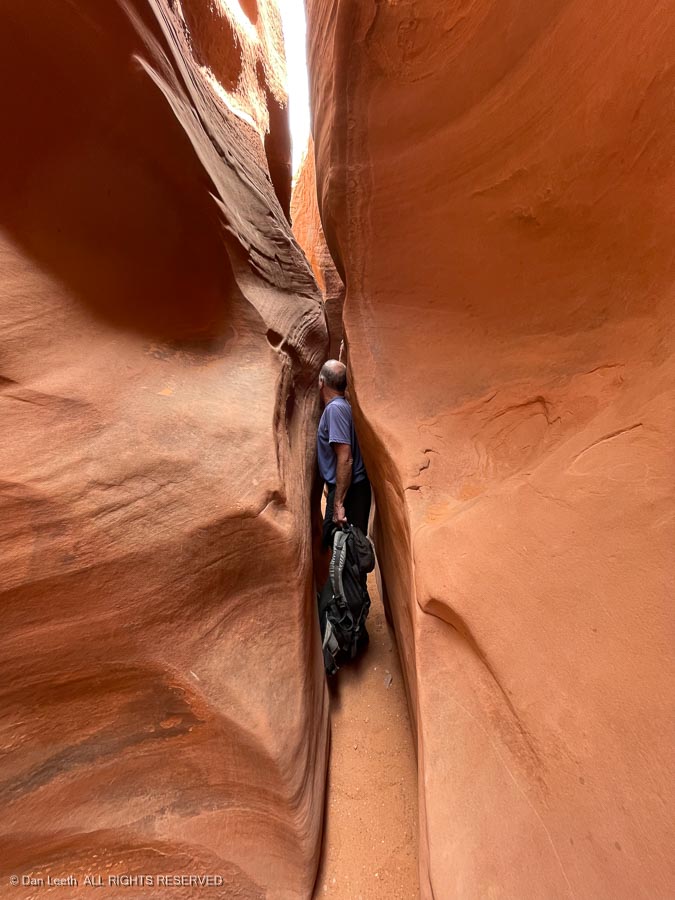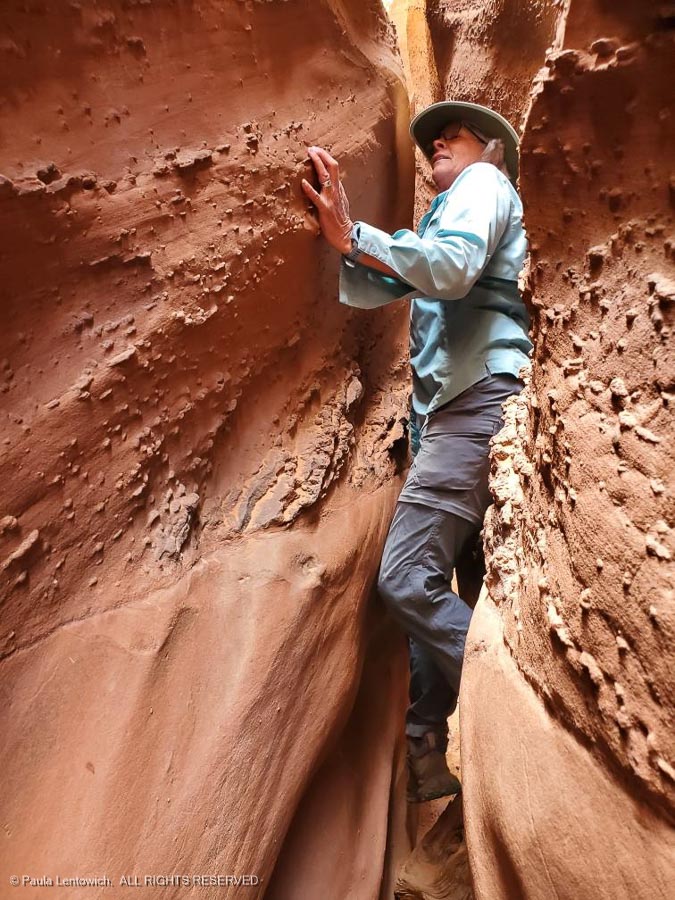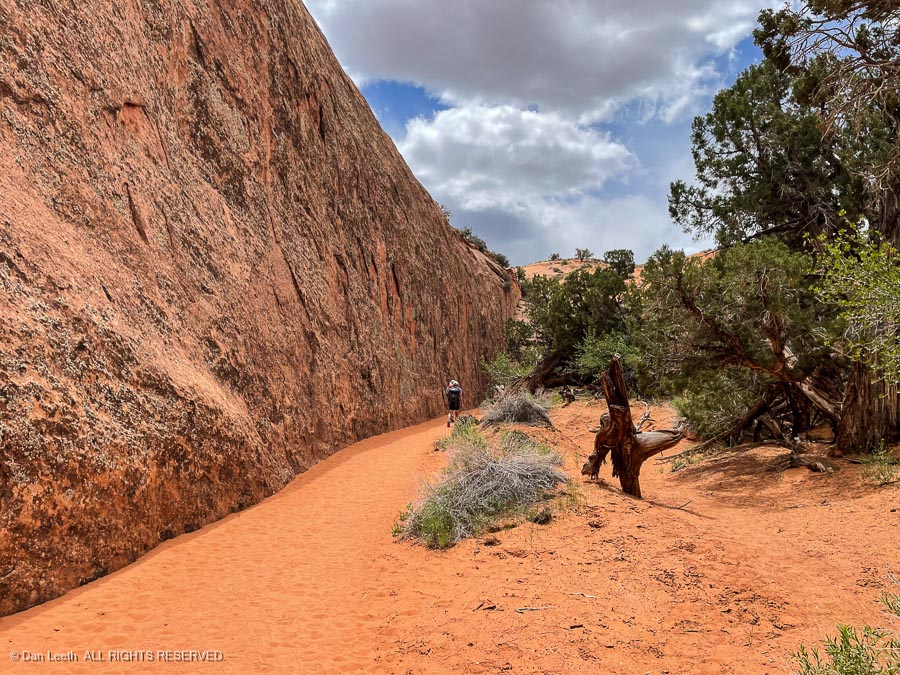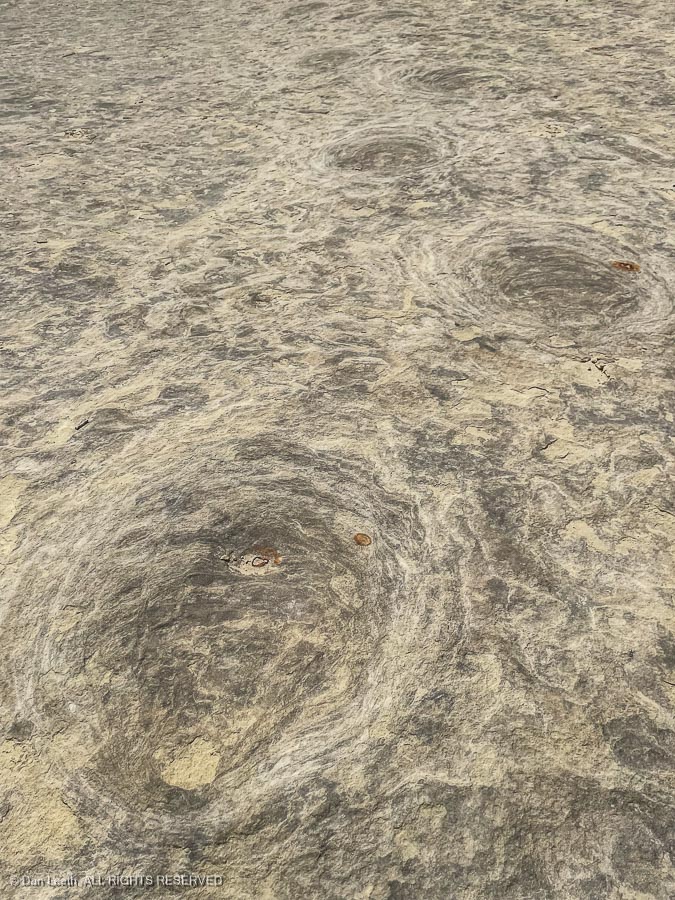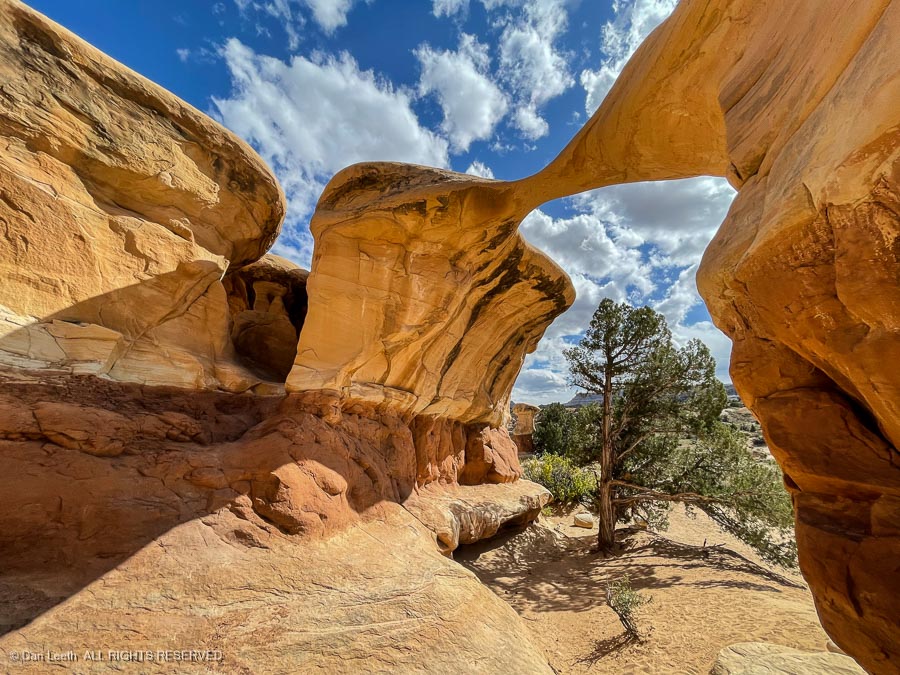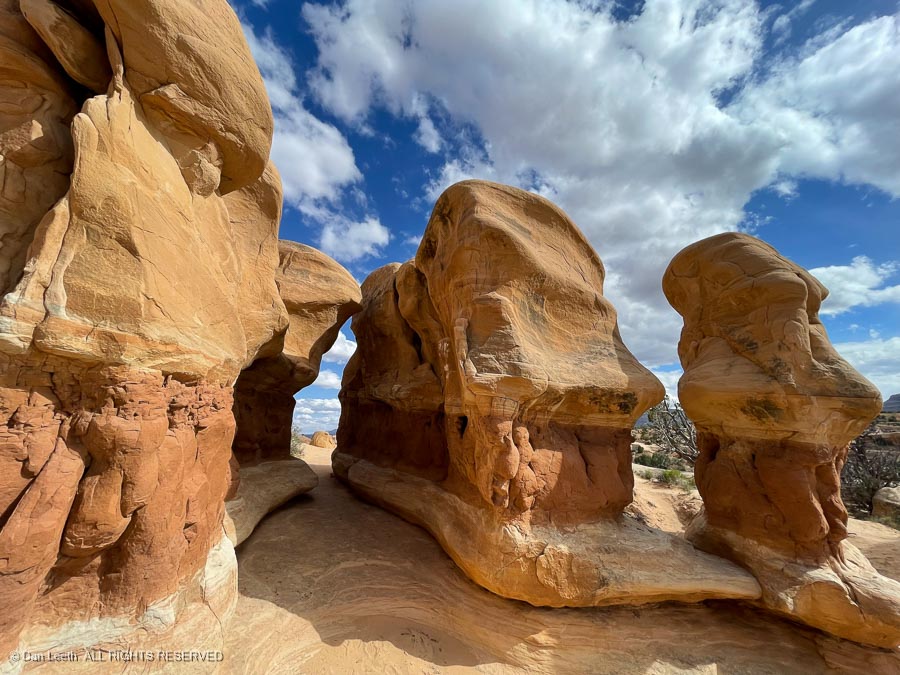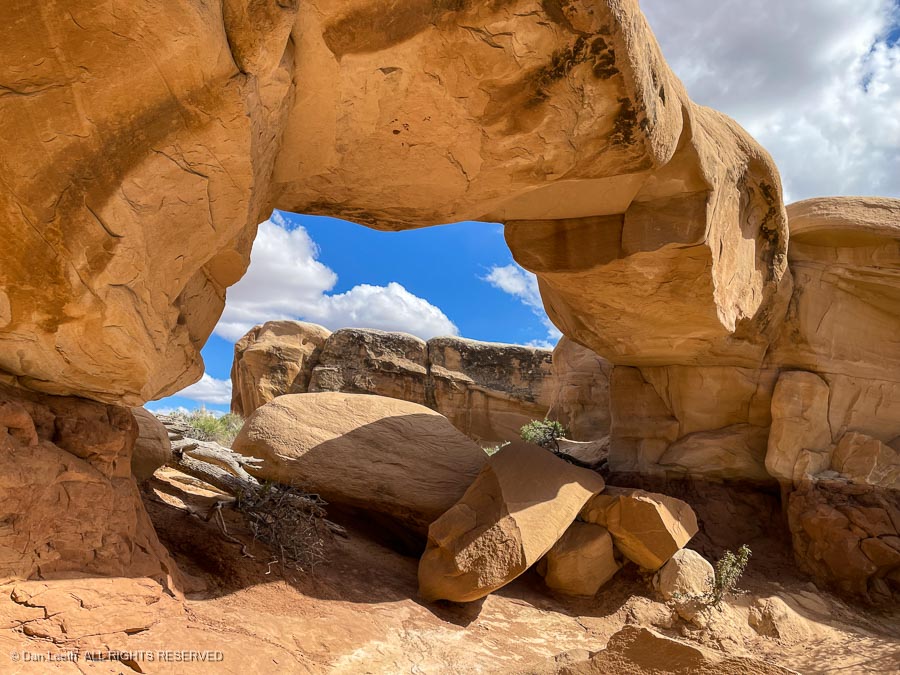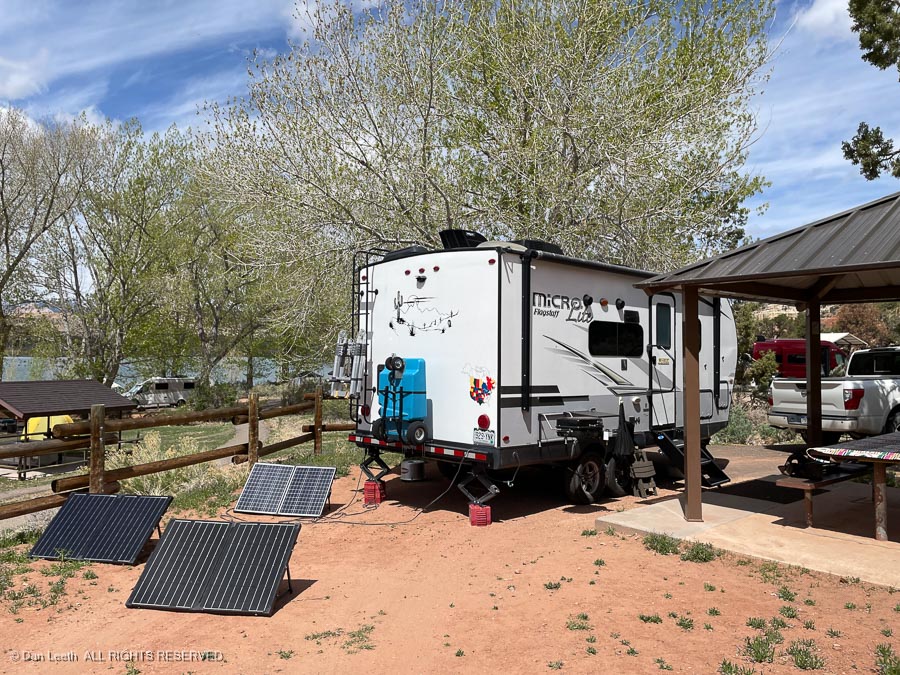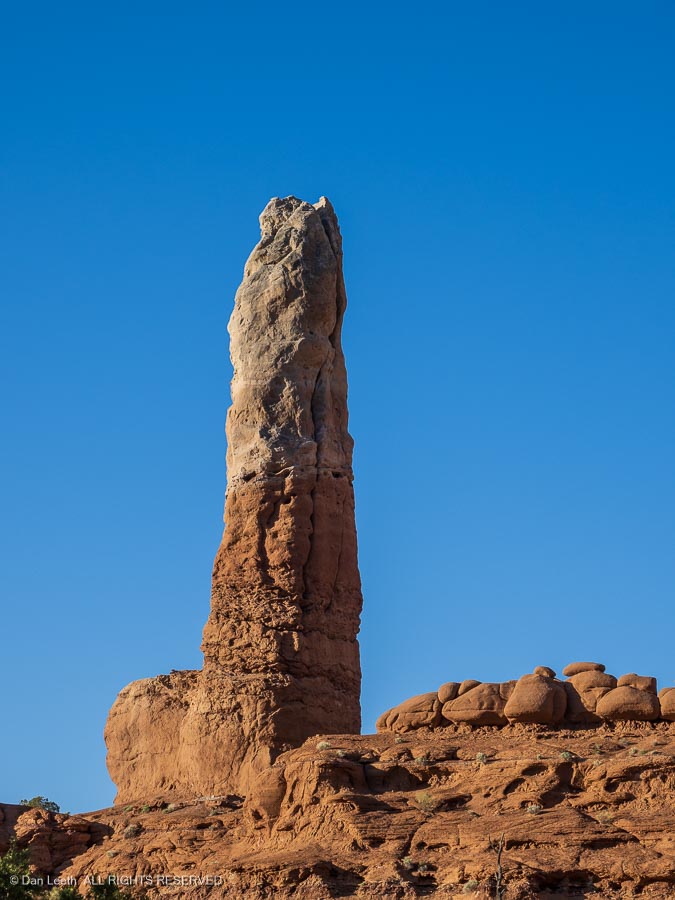Our springtime trip to Utah’s canyon country began Saturday with a two-night stay at James M. Robb Colorado River State Park Fruita Section where we dewinterized the trailer and sanitized the freshwater tank. These are jobs that I would have been done at home when we lived back in Gridlock City. Can’t do that at our Village in Fruita.

After taking care of a few errands on Monday morning, we hooked up the trailer and drove across the street to the Strayhorn Grill for lunch. Then it was off on our 90-mile journey to Green River State Park in Green River, Utah. There we had an excellent site with an excellent view of water line construction workers digging holes with their excavators.

Tuesday, we headed off for the San Rafael Swell. Our first objective was the Black Dragon Pictographs – rock art panels painted centuries ago by the Fremont Indians.
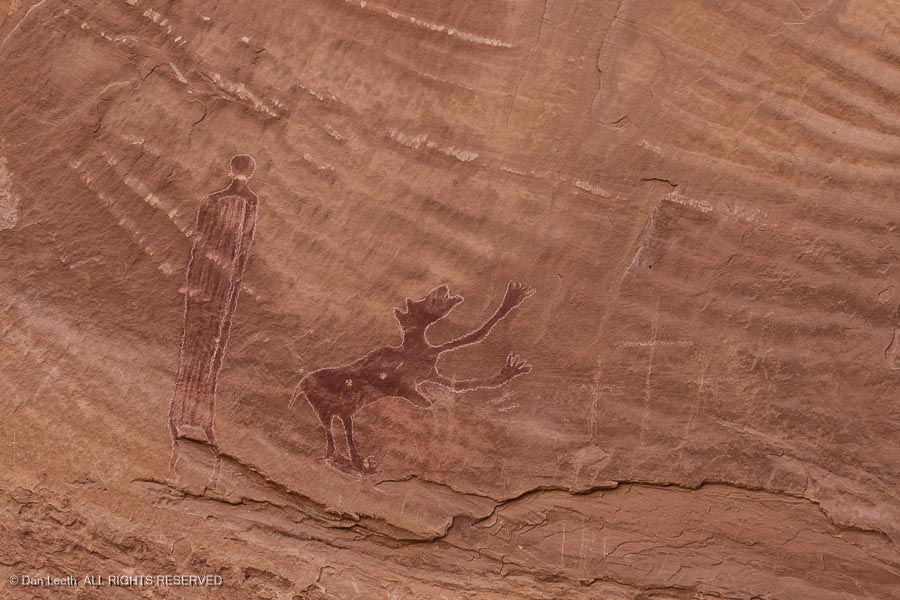
The guidebook said it required a hike of somewhere between one-half and seven miles to reach. That might be true if we were driving the family Buick. In Tighty, our 4×4 Nissan truck, we drove right up to them.
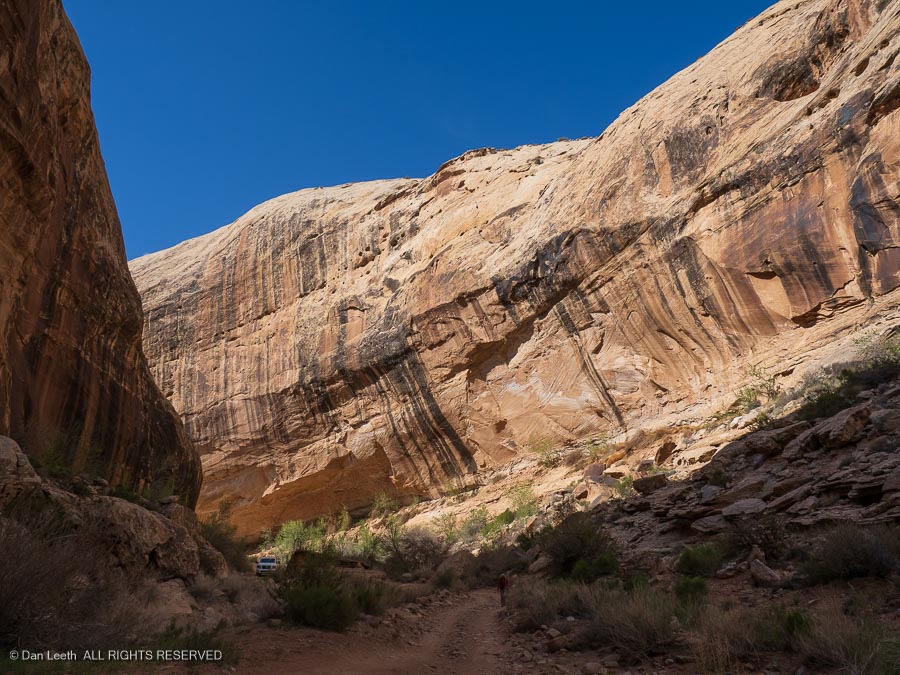
Our next targets were the Head of Sinbad pictographs and an old log cabin built by the Swasey boys. The route to the Head of Sinbad (which is named for a geologic formation, not the content of the artwork) took us up a sandy track across the flats. No problem for the Titan, but that family Buick would never make it up here and still have a muffler attached.
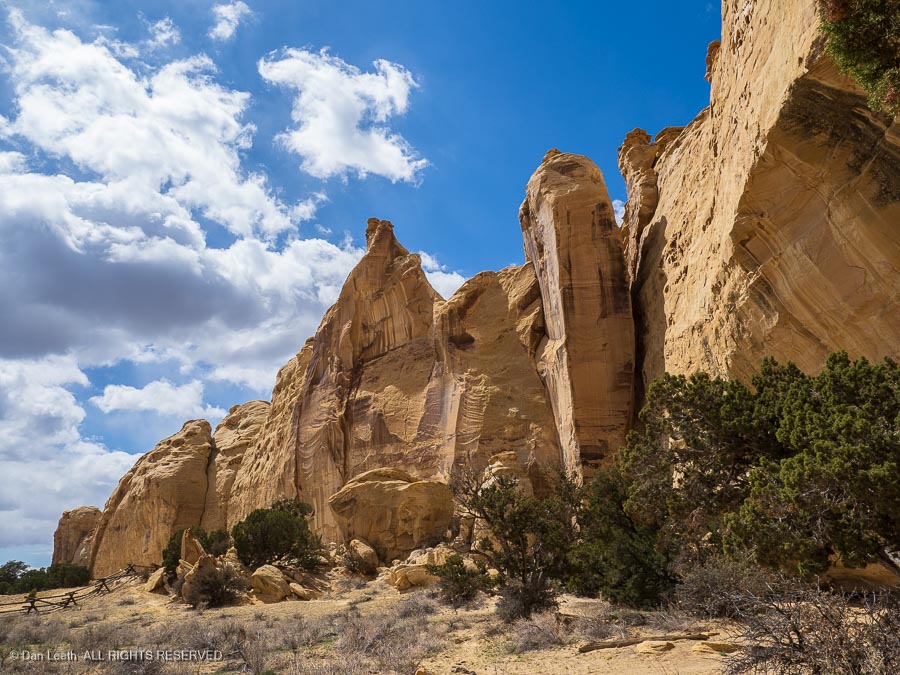
Several side-tracks intersected our track and we didn’t know which to take. We finally stopped and hiked up the road a half-mile or so in search of the artwork. We found incredibly beautiful geology and Dutchman Arch, but no pictographs.
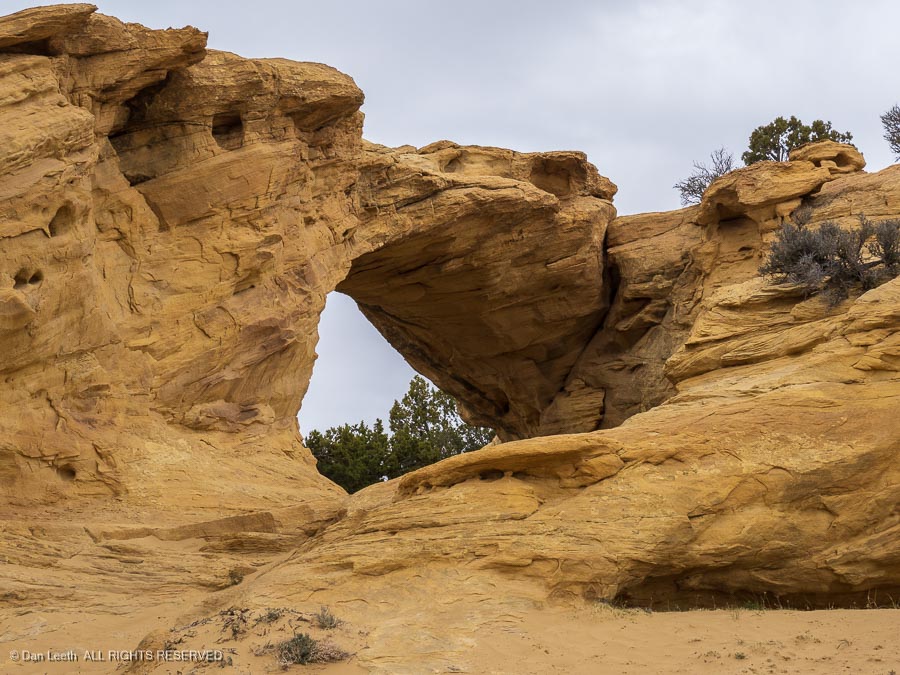
Giving up, we turned back and headed up the well-signed route to Swasey’s Cabin.
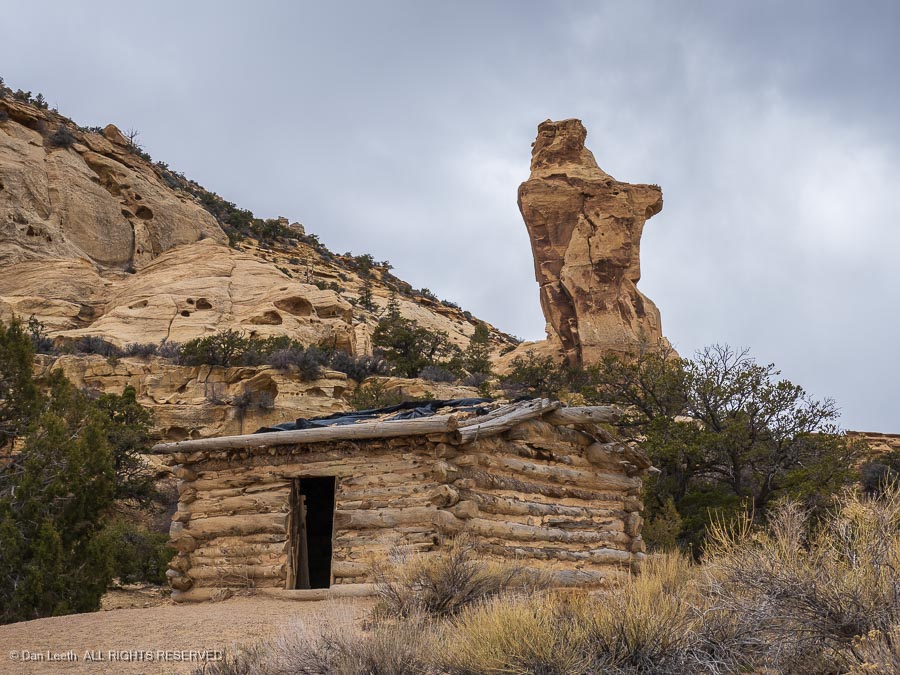
It was there that I had a Eureka moment. I pulled out my phone and surprisingly found here in the wilderness, I had one bar of precious Verizon coverage. I checked my Gaia app, found the location for the Sinbad pictographs, plotted out a route and we were on our way.

The effort proved worth it.
